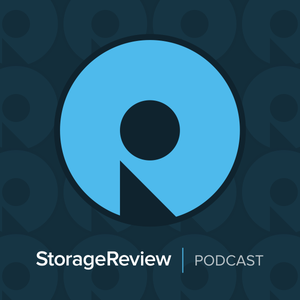
Podcast Archive - StorageReview.com
StorageReview.com
Enterprise technology storage coverage
- Podcast #134: Leak-Proof Liquid Cooling
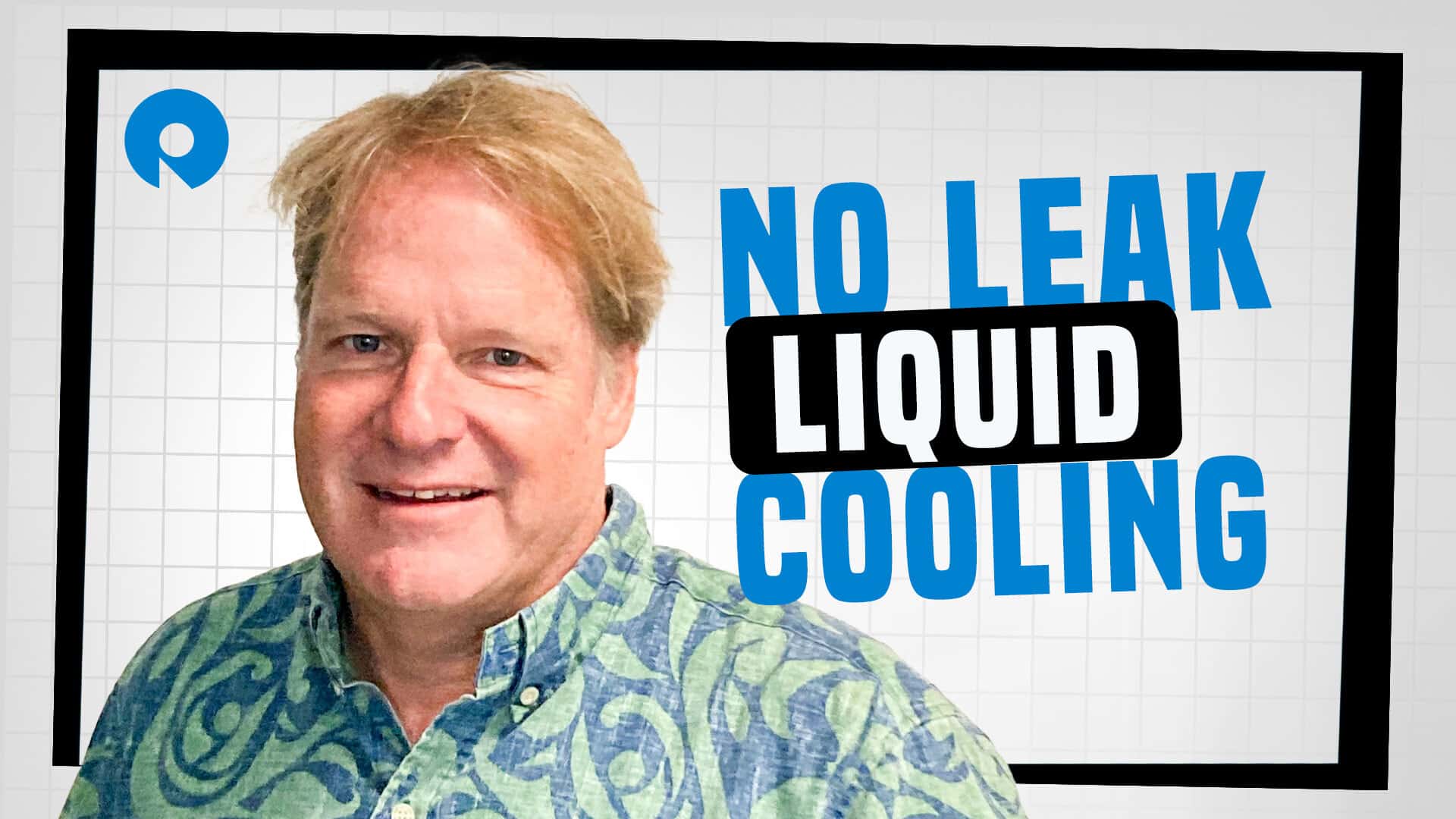
Chilldyne Podcast – liquid cooling solutions for data centers focusing on leak-proof design and efficiency for high-performance servers.
Brian rarely gets to sit down to a podcast with a doctor. However, today, he is joined by Dr. Steve Harrington, CEO of Chilldyne. We have been keenly interested in liquid cooling technologies, and there are more popping up all the time. But we have a soft spot for Chilldyne.
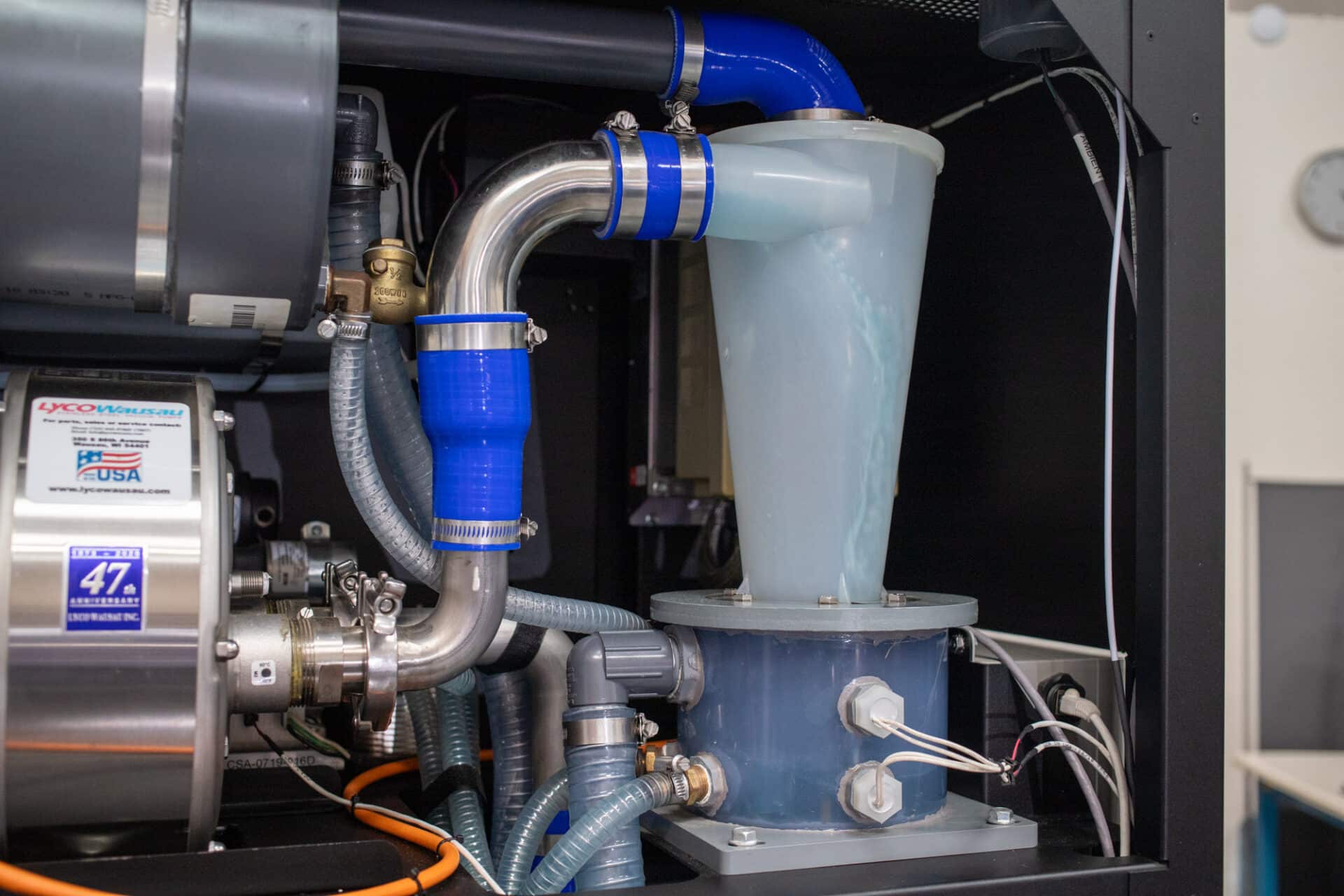
Some background on Dr. Steve Harrington. He is the CTO of Chilldyne and the founder of Flometrics. He is an expert and inventor in Fluid Dynamics and thermodynamics, designing pumps, valves, nozzles, flowmeters, aircraft cooling systems, rocket fuel pumps, rocket test stands, turbine flow measurement systems, medical ventilators, air/oxygen mixers, respiratory humidifiers, CPAP machines, spirometers, heat exchangers, vacuum cleaners, oxygen concentrators, motorcycle fairings, infusion pumps, electronics cooling systems, wave machines, data acquisition systems etc. But wait, there’s more. His expertise extends to electronics, programming, optics, nuclear physics, biology, and physiology.
Steve has more than 29 years of experience in fluid dynamics and thermodynamics. He has consulted for aerospace, semiconductor, medical device, racing, electronic cooling, and other industries. He has over 25 patents and has completed projects for NASA, DARPA, SOCOM, and USACE.
When he is not busy, he is a part-time faculty member at the University of California, San Diego, where he teaches an aerospace engineering senior design class where students instrument, build, and fly liquid rockets. He is also a surfer, a pilot, a scuba diver, a boat and car mechanic, an electrician, and a plumber.
There is much to learn about liquid cooling and we think this podcast will help answer some of the questions on the minds of IT and data center professionals everywhere.
That should be enough to make you interested in listening to this entire podcast. However, if you are strapped for time, we have broken the pod down into five-minute segments so you can hop around as needed.
00:00 – 05:30 Introduction
“Hot” New Technology: Liquid Cooling
Brian opens with a pun about liquid cooling being a “hot” technology in data centers. Liquid cooling has come full circle—once abandoned with the advent of CMOS, it’s now making a resurgence due to the intense heat generated by modern processors.
From Supercomputers to Jet Engines
Steve provides some personal history on his journey to liquid cooling, starting with cooling supercomputers in the 1980s. Fun fact: His expertise in cooling rocket engines and laser systems translated well to modern data center liquid cooling.
Why Did Liquid Cooling Leave?
Liquid cooling took a break because CMOS technology was thought to have solved the power problem. Surprise! Power demands are back with a vengeance.
From Aerospace to Data Centers
In aerospace, liquid cooling isn’t just about cooling; it’s about reliability over time—think planes, rockets, and lasers. Data centers, on the other hand, need uptime and longevity, adding unique challenges to Steve’s transition from aerospace.
ARPA-E Grant and the 2 Kilowatt Chip
Steve’s foresight included partnering with ARPA-E to develop a cold plate for a two-kilowatt chip. This foresight is paying off, as more data centers are bidding for projects with these high-power chips.
05:30 – 10:24 Reassuring the CFO
Liquid Cooling: A CFO’s Nightmare?
Testing liquid cooling systems can cost millions. Convincing CFOs to sign off on such “experiments” is no easy task, especially since they don’t fit neatly into the financial spreadsheet. It’s like buying a $2 million test drive—it sounds fun but is risky.
Sharing Secrets: The Meta Paradox
Meta and other commercial giants tend to lock up their liquid cooling secrets tighter than the company’s algorithm. Sharing is caring, but not when there’s competition involved.
Chilldyne’s Leak-Proof, Negative Pressure System
Chilldyne’s secret sauce: a negative pressure system that’s essentially leak-free. If a leak happens, air enters instead of coolant spilling, keeping the chips safe from a soggy fate.
Handling Leaks: When Not to Panic
Even with leaks, Chilldyne’s system keeps running.
Liquid Cooling Data: The Missing Chapter
Industry-wide data on the impact of liquid cooling on wear and tear is sparse. Liquid cooling can feel like more of a mysterious “beer conference” topic than an open discussion.
10:24 – 14:55 Keep the bacteria out of the water
The Biodiversity of Data Center Coolant
Did you know that the local bacteria in your water supply can mess with your liquid cooling system? Different regions have different microbes, which can wreak havoc on data center coolant systems, leading to clogged plates and overheating GPUs.
Coolant Chemistry 101
Chilldyne has a built-in chemistry lab to monitor coolant quality. Forget your sterile water dreams; this is a battle between biology and technology.
Coolant Additives: A Budget Dilemma
Don’t cheap out on your coolant chemistry unless you enjoy emergency maintenance.
PG 25: Gamers’ Friend, Data Centers’ Enemy
PG 25 is great for gamers—it doesn’t freeze and prevents bacteria growth. However, it attacks seals, leading to leaks over time, making it less ideal for long-term data center use.
Chemistry’s Role in Data Center Maintenance
Data centers often forget that liquid cooling isn’t a “set it and forget it” solution. It requires regular monitoring and maintenance.
14:55 – 20:16 The need for low-toxicity additives
The Additives That Keep the Cool
Chilldyne uses low-toxicity additives: a splash of antibacterial and anti-corrosion chemicals.
Say No to PG 25 (Sometimes)
PG 25 is a “don’t freeze” lifesaver for gamers shipping their liquid-cooled rigs but less so for data centers.
Facility Water is Just the Start
When installing a CDU (cooling distribution unit), Chilldyne starts with distilled or reverse osmosis-filtered water.
The Cold Plate Clean-Up Crew
One customer refused to use recommended additives, leading to a clogged, hot mess in their GPUs. Chilldyne stepped in with a chemical cleanse, but if a cold plate gets too gummed up, sometimes it’s game over—time for replacement.
Liquid Cooling ≠ Set It and Forget It
Electronics may run smoothly for years, but liquid cooling? That’s a different beast.
20:16 – 26:03 Water is still the best for cooling
Water: The MVP of Cooling Fluids
Why stick with good ol’ water? It’s cheap, non-toxic, and performs well—especially in single-phase systems.
Immersion Cooling: The Slow Burner
Immersion cooling with engineered oils has some potential, especially in edge zones or moderate power servers, but it’s just not efficient enough for today’s two-kilowatt monsters.
When Pipes Get Silly Big
Watch for logistical nightmares as cooling systems scale up.
Electrical Limits: The Real Bottleneck
While liquid cooling systems can scale, there’s a limit to how much electrical current a chip can handle.
Don’t Forget the Chiller
While cooling towers are ideal in many places, some regions require chillers due to water scarcity. Go with a cooling tower.
26:03 – 29:44 Is that a leak?
The Leaks Won’t Tell You
Unlike server components, liquid cooling systems aren’t yet smart enough to give you advanced warnings about leaks.
The Problem with Positive Pressure
Positive pressure systems that detect leaks with special tape are reactive—they shut down servers when something goes wrong. Negative pressure systems like Chilldyne’s, however, keep the servers running even with minor leaks, avoiding costly downtime.
Compatibility Chaos
The issue with buying parts from multiple vendors is compatibility problems.
Plumbing Isn’t an IT Skill
Data center operators are skilled in networking, cybersecurity, and power management—but they’re not plumbers or chemists. That’s where specialized vendors come in.
Switch-Over Valves: The Fail-Safe
Chilldyne uses switch-over valves to provide redundancy in cooling systems. These valves work like airplane safety mechanisms—if one system fails, the other kicks in without the servers even noticing.
29:44 – 35:22 Make sure liquid cooling is what you need
Scale Matters: The 100kW Threshold
Steve suggests that liquid cooling isn’t worth the hassle unless you’re dealing with over 100kW of compute power.
Fortune 500 and Beyond
Big companies are already there, but even mid-tier enterprises are starting to feel the heat. The power consumption of GPU-packed servers means that liquid cooling will soon be a necessity for many organizations.
The Rack Scale CDU That Wasn’t
Chilldyne has a design for a 50-100kW rack scale CDU, but no takers yet.
The Four-Inch Pipe Problem
Liquid cooling systems max out at around 1-2MW before the plumbing gets unwieldy. Keeping the system manageable is key.
Electrical vs. Cooling Limits
We’re approaching the point where electrical limits are more problematic than cooling capacity.
35:22 – 40:16 Is it hot in here?
The Heat Disposal Conundrum
It’s not enough to cool the gear—you’ve got to deal with all that heat.
The Chip Temperature Tango
There’s a balance between cooling efficiency and chip performance. Design systems that can go colder if needed because the next-gen chips might perform 20% faster with lower temperatures.
Data Center Math is Getting Hard
Factor in cooling tower efficiency, GPU performance, fan speeds, and a whole lot more. The math behind today’s cooling solutions is critical for optimization.
HVAC and IT: Strange Bedfellows
HVAC engineers and IT teams used to operate separately, but liquid cooling is bringing them together.
Keeping the IT Guys in the Loop
Encourage collaboration between hardware providers and cooling experts to ensure the solution won’t melt under pressure.
40:16 – 43:35 Wrap-up
Get Started with Liquid Cooling Now
Steve recommends starting small, but start now. Get a system, run it, and learn from it before you’re in too deep.
The Danger of Overconfidence
Some companies are planning massive liquid-cooled data centers without ever testing smaller systems.
Lead Time: It’s Real
Lead times for liquid cooling systems can range from 16 to 52 weeks. So, better get those orders in early!
Spec Confusion with New Racks
NVIDIA’s new MVL racks are on the horizon, but specific water temperature and chemistry guidelines are still unclear.
Home Lab Mentality: Get Your Reps In
Steve encourages enterprises to take the “home lab” approach: start small, mess around with it, and learn.
Engage with StorageReview
Newsletter | YouTube | Podcast iTunes/Spotify | Instagram | Twitter | TikTok | RSS Feed
The post Podcast #134: Leak-Proof Liquid Cooling appeared first on StorageReview.com.
25 September 2024, 3:24 pm - Podcast #133: Effortless Liquid Cooling with JetCool
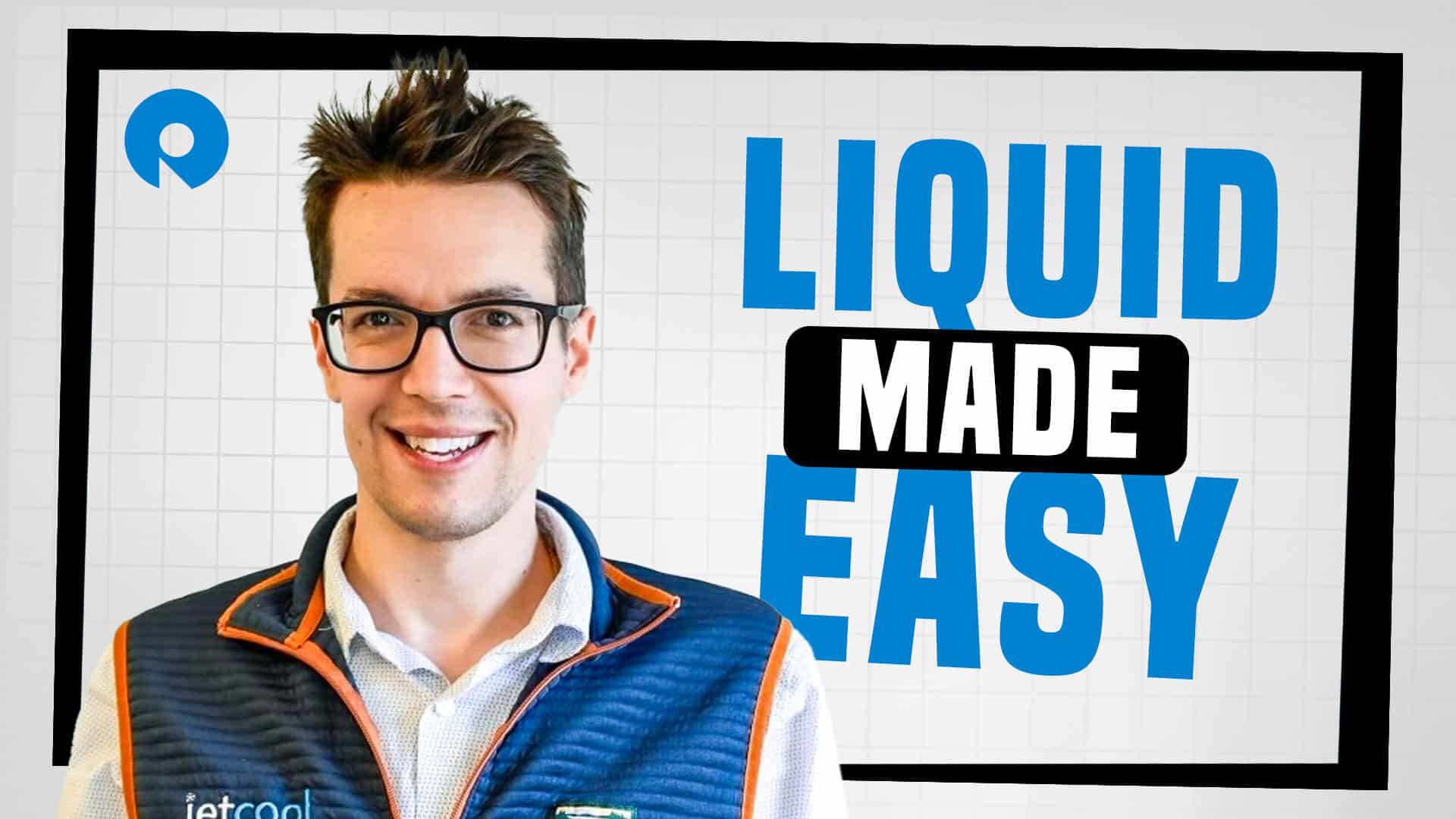
Closed-loop liquid cooling from JetCool delivers power efficiencies and increased CPU/GPU performance.
Liquid cooling continues to gain traction in the enterprise, especially with the intense compute requirements associated with AI. CPUs and GPUs are running hotter, and traditional air cooling struggles to keep those temperatures down. We have covered several liquid cooling systems over the past few years, with JetCool being a standout player.
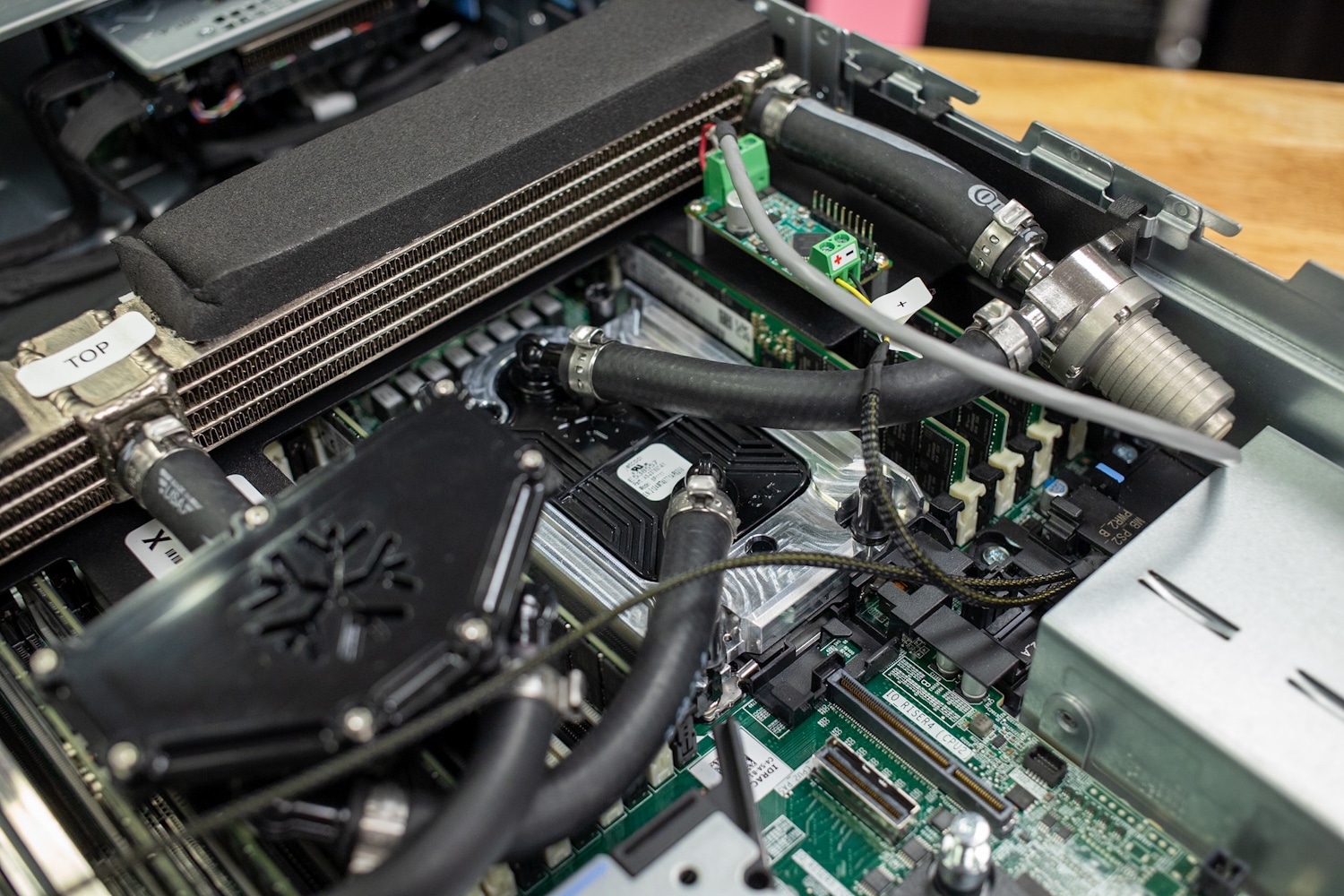
After running into JetCool during SuperComputing 2023, we brought their technology into our Ohio lab, nestled inside an R760. To say we were impressed would be an understatement. To gain more insight into this technology, Brian invited JetCool founder and CEO Bernie Malouin for this podcast.
Bernie describes himself as a technical professional with demonstrated experience from concept studies through deployment. By the way, Bernie also holds a Doctor of Philosophy (Ph.D.) in Mechanical Engineering and a Bachelor’s Degree in Mechanical and Aeronautical Engineering. That’s impressive, but before he founded JetCool, Bernie spent eight years at MIT Lincoln Labs. He was the technical and programmatic lead for a multi-sponsor research project to implement advanced cooling technology in high-power RF devices for advanced electronics applications.
Although this podcast is less than 40 minutes long, Brian and Bernie cover a lot of ground. It’s worth viewing or listening in its entirety, but if you are short on time or need specifics on a particular topic, we have broken down the conversation into five-minute chunks so you can skip around.
00:00 Introduction
- The landscape
- It’s AI’s fault – or is it hype
- GPUs and CPUs need to cool it
- It’s about efficiency
- What’s the power budget?
- Wait! Liquid-Assisted?
06:00 Clarify Liquid Assist, please
- Getting technical
- Cold plates, closed-loop, and radiators, oh my
- Efficiencies in cooling with JETCOOL
- Arrays of tiny fluid jets
- Surgically removing heat
- Now, where are those heat nodes?
- Profiling the CPU
10:00 Relationships with the chip makers
- Staying ahead of the curve
- Chip makers – partners in design
- Details on where to cool
- Tiny pumps
- micro DC brushless pumps
- circulating fluid throughout the server
15:00 Let’s talk about pumps, cold plates and radiators
- Radiator technology
- Modified technology in Formula One racing
- Proven reliability
- Cold plates
- Originally developed for aerospace applications
- What about the liquid?
- JETCOOL uses PG 25 (Propylene glycol)
- Benefits
- non-corrosive
- natural antifreeze
- non-toxic
- ready to use
- Benefits
- JETCOOL uses PG 25 (Propylene glycol)
- Top off the fluid
- can you go to a jiffy lube?
22:00 What happens when the hose breaks
- Leak tests
- Overpressure tests
- Only 8-10 Oz of fluid in the system
- Small puncture
- faulty seal
- might experience a few drops, but they evaporate
- the telltale sign that there is a problem
- CPU temperature rises
- Leak detection mechanisms
25:00 Looking for the signals
- OCP is dedicating two days for liquid cooling for their next conference
- Partners can do a better job of educating customers about liquid cooling
- Upgrade through the channel
- driving the pull-through
30:00 Yeah, but how much does it cost?
- An upgrade is about ten percent of the system price
- ROI
- within about six months
- Suitable for co-location services
- gaining efficiencies in co-lo facilities
- On-premises deployments
- limited space
- limited budget
- power constraints
- Heavy lifting performed by the Intern and Kevin
37:00 Silence is liquid gold
- One of the best benefits
- Simple to try
Wrap-up: Stop by JETCOOL at OCP in October!
Engage with StorageReview
Newsletter | YouTube | Podcast iTunes/Spotify | Instagram | Twitter | TikTok | RSS Feed
The post Podcast #133: Effortless Liquid Cooling with JetCool appeared first on StorageReview.com.
12 September 2024, 2:21 pm - Podcast #132: IGEL Future-Proof Solutions For End-User Computing Deployments
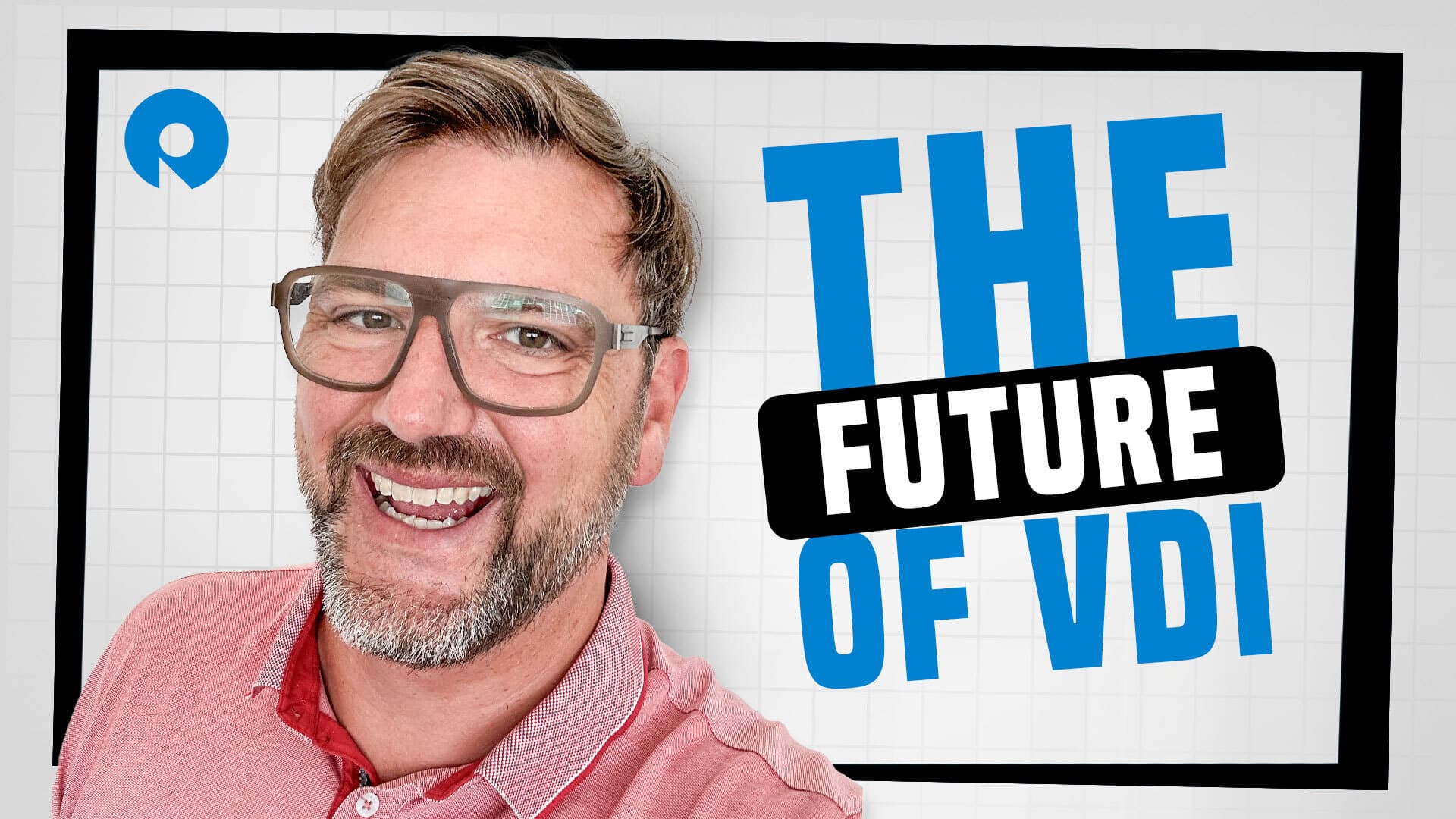
This week, Brian is joined by Matthias Haas, IGEL’s Chief Technology Officer and Managing Director, Storagereview Contributor, and preeminent EUC expert Tom Fenton. IGEL Technology is a virtual desktop and end-user computing leader focused on thin client development. Check out Tom’s recent coverage of IGEL Disrupt.
This week, Brian is joined by Matthias Haas, IGEL’s Chief Technology Officer and Managing Director, Storagereview Contributor, and preeminent EUC expert Tom Fenton. IGEL Technology is a virtual desktop and end-user computing leader focused on thin client development. Check out Tom’s recent coverage of IGEL Disrupt.
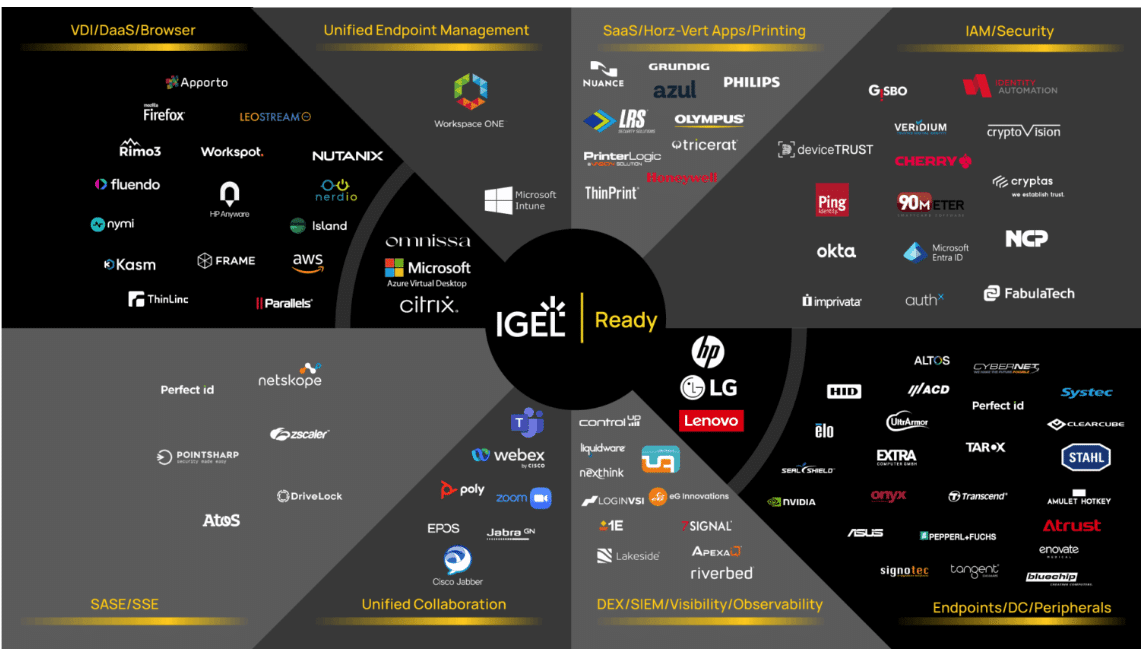
Matthias describes himself as an “EUC visionary helping customers to future-proof their endpoint deployments at scale for a multi-cloud-enabled world.” He has been in IT for over 15 years, starting as a System Engineer focused on Linux security. During his tenure in software development, Matthias developed a deep technical understanding he used to create customer-oriented solutions. These products and solutions had a clear technical strategy but also answered customers’ day-to-day challenges.
Although a successful business model, IGEL has moved away from the hardware business typically associated with thin client technology and developed a secure, purpose-built thin operating system. Creating a thin operating system addresses the current transformation in multicloud deployments. The disruption to virtualization generated by Broadcom’s recent VMware acquisition adds angst to users dependent upon cloud technologies. Of course, many of the major hardware. Many enterprise software and hardware vendors have jumped on the VMware migration bandwagon. Still, IGEL has addressed this effect on end-user computing, creating a secure, easy-to-use, thin operating system.
For those unfamiliar with Tom’s work, he has over twenty years of experience working with virtualization and cloud technologies and over twenty-five years of Enterprise IT experience. He has a track record of keeping up with new technologies and presenting solutions to complex problems. Tom has been a key contributor to Storagereview.com.
This is an essential topic since EUC touches most of us daily. Although shorter than most of our podcasts, it is packed with information. If you have the time, give this a complete view, but if you are strapped for time, we have provided a time-stamped breakdown of the transcript.
00:00 Introduction
- Tom gets a compliment from Brian
- Matthias provides some IGEL history
- Disruption due to Covid
05:00 What do you mean it doesn’t support Windows 11?
- IGEL Disrupt announcements
- Fully integrated
- Partnerships
- IoT
- IGEL Disrupt 2024 dates
- App Create Portal
10:00 Build that app
- Build and sign on the App Create Portal
- Content streaming
- Pushing the Edge
- Building the Insight Module
- Secure the app
15:00 It’s agnostic
- Reducing the attack surface
- Talking about browsers
- Managing the footprint
- Make it permanent or temporary
- Managing the identity
20:00 What’s needed to run a system?
- Run it on top of Windows or macOS?
- Providing the best user experience
- Developing local apps
- Zoom
- Teams
- WebEx
- Supporting AI
25:00 Neural Processing Units
- Functionality
- Inferencing
- AI is a moving target for end users
- GPUs in the cloud
- Leveraging the capabilities
30:00 Running workloads on an endpoint
- Or should workloads run in the data center or on a GPU?
- Browsers will continue to be important
- Secure browsers
- Enterprise browsers
35:00 Digital signage infrastructure
- Learn more from the IGEL website (link below)
- IGEL slack community
- Run IGEL OS 12
- Runs anywhere
39:00 Wrap up
Engage with StorageReview
Newsletter | YouTube | Podcast iTunes/Spotify | Instagram | Twitter | TikTok | RSS Feed
The post Podcast #132: IGEL Future-Proof Solutions For End-User Computing Deployments appeared first on StorageReview.com.
3 September 2024, 4:33 pm - Podcast #131: SSD Industry Vet Jonmichael Hands – The Latest on Enterprise SSDs
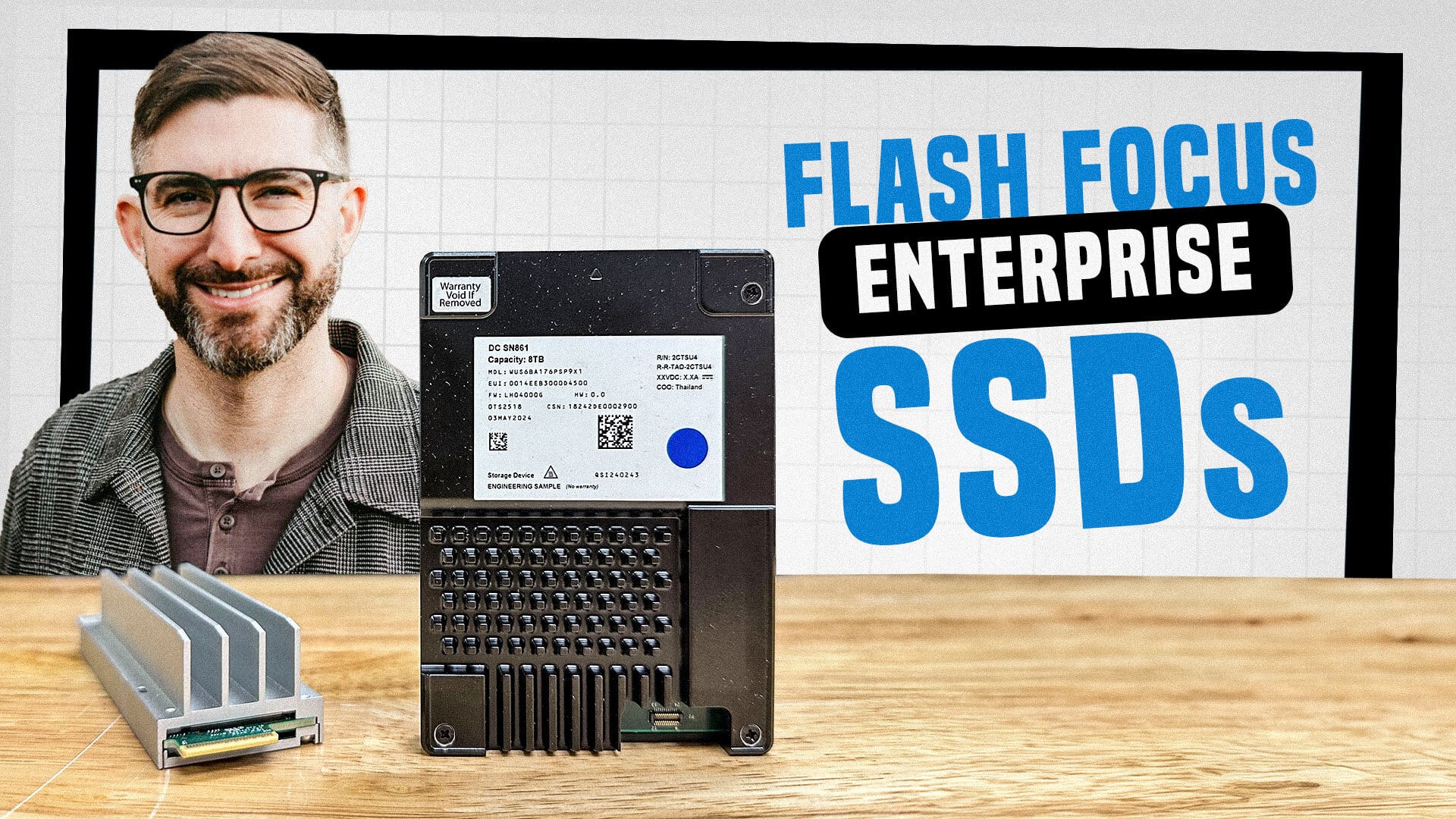
This is another live podcast in which Brian checks in with long-time friend and industry veteran Jonmichael Hands for this fast-paced, technically focused podcast. Jonmichael is currently the Senior Director of Product Planning at FADU but has an extensive storage, networking, and blockchain background.
This is another live podcast in which Brian checks in with long-time friend and industry veteran Jonmichael Hands for this fast-paced, technically focused podcast. Jonmichael is currently the Senior Director of Product Planning at FADU but has an extensive storage, networking, and blockchain background. He also has a patent for Accelerated data recovery in a storage system, a recipient of The Most Innovative Flash Memory Technology Award, and, while at Intel, was a member of the NVM Express marketing group.
Brian and Jonmichael are passionate about flash technology and seem on the same page. Jonmichael brings some deep and varied industry knowledge to the conversation, making this a candid learning session.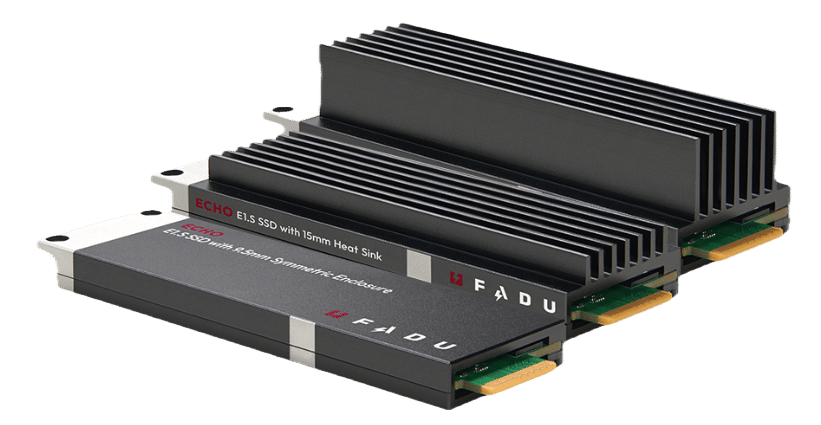
If you are interested in flash technology and want to hear more about the future of SSD in this AI universe, you will enjoy this one. But if you are only interested in a few topics, we have highlighted them in five-minute increments.
0-5 minutes
- Introduction and Background
- Introducing Jonmichael, noting their long history and expertise in the industry.
- Reminisces about their last meeting involving Topo Chico and discussing chia, blockchain, and crypto.
- Ongoing crypto craze and Jonmichael’s return to the SSD world.
- The challenging market conditions for IPOs and crypto over the last two years.
- Transition back to tech and improvement in the SSD market, potentially leading to the best year for SSD revenue.
5-10 minutes
- NAND Prices and AI Impact
- NAND costs during COVID, recent increases in SSD prices.
- The cyclical nature of Nand prices and renewed challenges.
- AI’s impact on data center storage demand and the importance of flash.
- Emphasis on increased CapEx for data centers and the unsung hero status of storage in AI.
- Upgrading legacy SAN infrastructure for high-end AI GPU work.
10-15 minutes
- Meta Engineering and AI Storage
- Comments from listeners and viewers.
- Meta’s engineering efforts in AI storage solutions,
- Building exabyte-scale storage.
- There is a need for more extensive flash capacity for training large multi-modal models.
- Emphasis on the cost and importance of fast SSDs in training servers.
- The complexity of modern AI data centers and advanced storage solutions.
- Significance of high-end SSDs and storage technology in AI training servers.
15-20 minutes
- Storage Technologies and Market Trends
- Power requirements and storage challenges in data centers.
- Advantages of high-performance SSDs
- The need for efficient networking.
- Broadcom’s high-speed NICs and the importance of network bandwidth for GPU clusters.
- The role of switching in supporting AI workloads and infrastructure.
- Benefits of running GPUs locally and the competitive advantage of private data sets.
20-25 minutes
- AI Strategy and Industry Insights
- AI strategies and the importance of GPUs.
- Setting up AI tools like Nvidia’s AI studio for private data use.
- Running AI models on affordable NAS systems for private data protection.
- Importance of AI tools for improving productivity and creativity.
- SSD form factors and the evolution of E1 and E3 standards.
25-30 minutes
- Form Factors and Industry Adoption
- E1 and E3 form factors in hyperscale and enterprise markets.
- Transitioning to new form factors and customer preferences.
- Benefits of E3 form factors.
- Form factors for industry adoption.
30-35 minutes
- Hyperscale and Enterprise SSD Adoption
- E1.S form factor in hyperscale and enterprise training servers.
- Limited availability of Gen 5 E3 drives.
- Transition challenges to Gen 5 E3 drives.
- Potential improvements for Gen 6.
- Demise of Gen 4 for U.2 drives.
- E1.S and E3 form factors.
- Thermal management and capacity options.
35-40 minutes
- Client-Side Storage and Form Factors
- Slow uptake on client-side for Gen 5 drives.
- Inefficiency of M.2 for high-performance Gen 5 drive.
- Differences in performance requirements between laptops and desktops.
- Potential of E3 form factor in consumer desktops.
- Benefits of PCIe cabling standards.
40-45 minutes
- Flexible Data Placement (FDP) Technology
- Flexible Data Placement (FDP) technology.
- Benefits in reducing write amplification factor (WaF).
- FDP allows data to be tagged and placed more efficiently on the SSD.
- FDP can be implemented without requiring software to be FDP-aware.
- Comparison of FDP with zone namespaces.
- Complexities involved in the zone namespaces.
- Flexibility and benefits of FDP for different workloads.
- Flexible Data Placement (FDP) technology.
50-55 minutes
- Host Management vs. Drive Management
- Rely more on host systems for storage management.
- Complexities of host-level management.
- Understanding SSD internals.
- E1.S, benefits for dense storage arrays.
- Upcoming 128TB and 256TB drives.
- Expected market impact.
55-60 minutes
- Controller Technology and Performance
- Importance of controller technology in SSD performance.
- Advantages of 16-channel controllers for power efficiency and performance.
- Performance per watt as a critical metric in SSD evaluation.
- Ongoing developments and the future potential of FTP technology in the market.
- Wrap-up of the discussion and promotion of blogs and future sessions on related topics.
Engage with StorageReview
Newsletter | YouTube | Podcast iTunes/Spotify | Instagram | Twitter | TikTok | RSS Feed
The post Podcast #131: SSD Industry Vet Jonmichael Hands – The Latest on Enterprise SSDs appeared first on StorageReview.com.
15 July 2024, 9:16 pm - Introduction and Background
- Podcast #130: The Latest from Pure Storage – ’24 //Accelerate Highlights
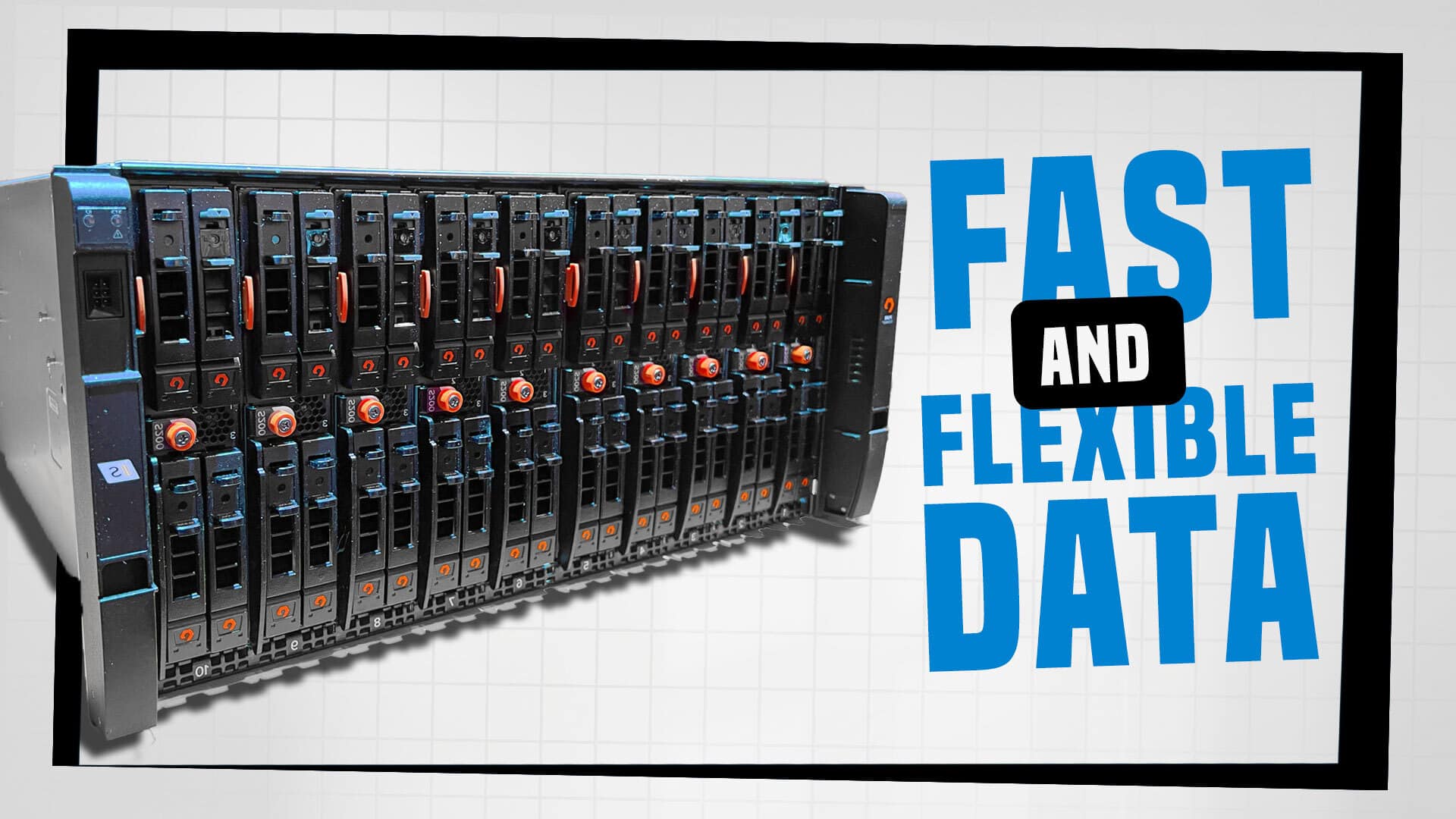
Brian invited Peter Skovrup, VP of Product Management for Pure Storage, to continue their conversation from the Pure //Accelerate Las Vegas event in June. Brian and Jordan spent a few days with Pure, learning the latest for what’s new with Pure Storage technology – like their 150TB flash module!
Brian invited Peter Skovrup, VP of Product Management for Pure Storage, to continue their conversation from the Pure //Accelerate Las Vegas event in June. Brian and Jordan spent a few days with Pure, learning the latest for what’s new with Pure Storage technology – like their 150TB flash module!
This is another live event where the audience gets to ask Brian’s guests questions as they arise throughout the conversation. In case you missed it, our first two live events had a few hiccups, but we seem to have ironed those out now. This jam-packed session covers hardware and software, the all-important NPS scores, flash technology, and how it all fits together with Pure Storage solutions.
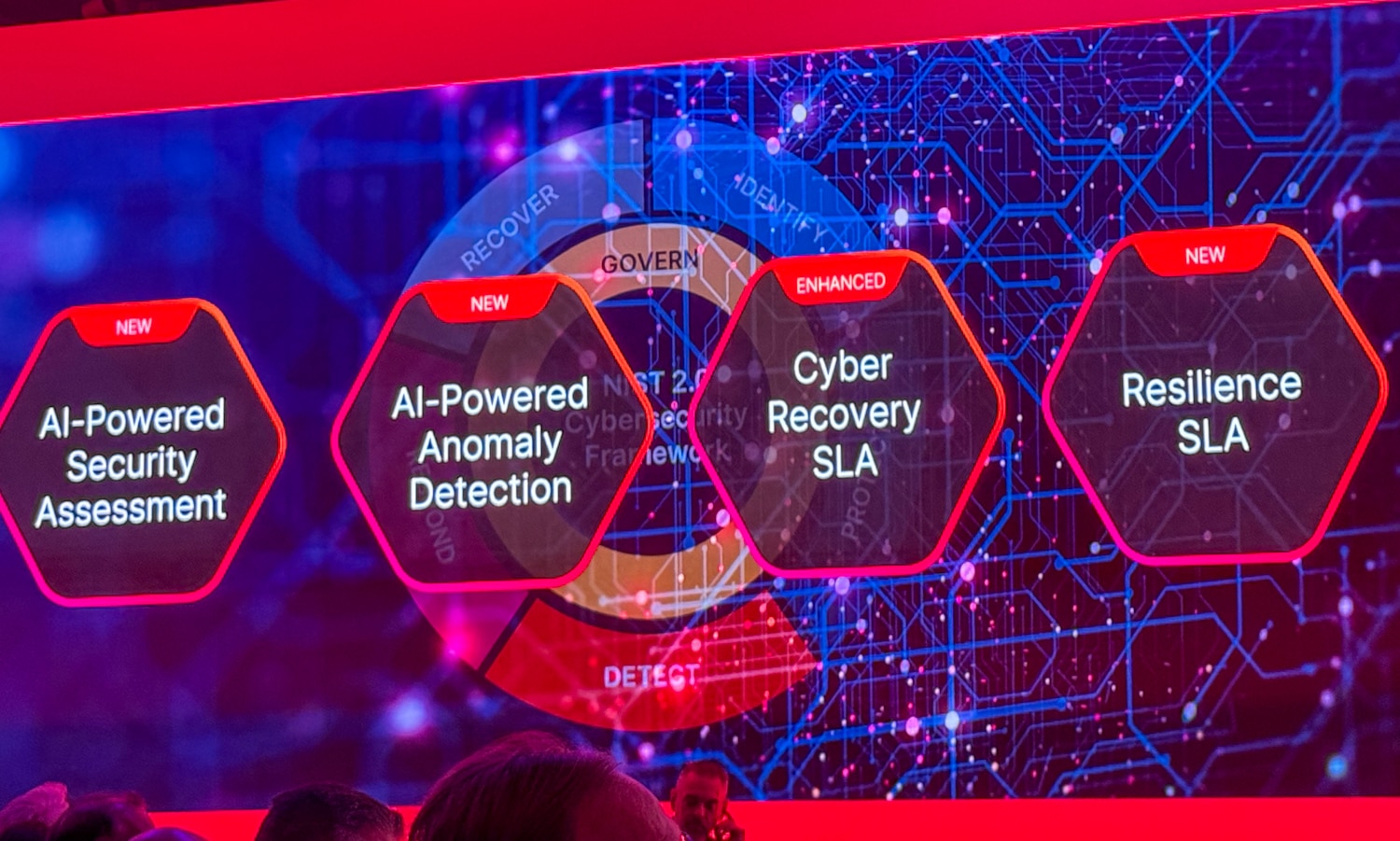
This is an exciting conversation that also tends to be a learning experience. If you have the time, it is worth listening to this entire podcast. However, if you are short of time or need to find details on a particular topic, we have created an easy way to jump around the podcast to get to the issues that are most interesting to you.
The podcast timestamps have been broken down into five-minute increments to make finding what you are looking for easier.
00:00 Introduction
- Brian introduces Peter and talks a bit about Pure //Accelerate
- Advancements in Pure Storage, flash modules, AI integrations, and Evergreen enhancements
- The importance of NPS
06:00 Core Products
- Where Peter is focused
- FlashArray for Scale-up
- FlashBlade for Scale-out
- Operate as a unified storage system
- System Architecture
- DirectFlash Module (DFM)
10:00 Why DFM is important to Pure
- Personal anecdotes about football
- What is it
- What does it do
- Global management for flash storage
- Online Community
15:00 Energy Efficiency
- DFM benefits
- Reducing flash power consumption at DFM level two
- Simplifying design by limiting DRAM
- Centralizing processing
- DRAM becomes part of the controllers
- Increasing density and efficiency in storage systems
21:00 Questions from the Live Audience
- What are the speed trade-offs?
- Challenges managing increased data storage
- Performance impacts
- Pure’s approach to non-disruptive updates
- Business aspects for non-disruptive operations
26:00 Pure Storage Evergreen//One
- Clarification on how Evergreen programs work for customers
- Discussion on the financial and operational benefits of continuous upgrades
- Explanation of subscription models and their flexibility
- Benefits of Evergreen One and subscription-based storage solutions
- Focus on delivering performance SLAs and scalability
30:00 Back to the importance of NPS
- Traditional hardware investment model vs. Evergreen program
- Emphasis on the simplicity and cost-effectiveness of Pure Storage’s upgrade process
- Financial planning benefits of Evergreen programs
- Importance of the clarity and visibility of costs
- Non-disruptive upgrades and flexibility for customers
36:00 Introduction of Pure One
- Introduction of Pure One
- Data visibility features
- Simplifying storage management
- Management-as-a-service capabilities
- Copilot
- Workload planner, anomaly detection, and security assessment
- Benefits of Pure One for operating and optimizing storage environments at scale
42:00 Finally, mentioning AI
- AI workloads and the importance of data support
- Nvidia’s presence at the event
- Collaboration with Nvidia and the certification of Superpod
45:00 SuperPod at scale
- Importance of 400 gig Ethernet for AI workloads
- Flashblade’s scalability and performance for AI and HPC environments
- Hardware requirements for AI workloads and the advantages of Flashblade
- Flashblade’s architecture and its benefits for AI and unstructured data
- Flashblade versus other parallel file systems
- Importance of metadata operations in high-performance file storage
51:00 Data Management
- Challenges of managing data for AI
- Importance of a comprehensive storage solution
- SLA-based solutions for AI workloads
- Long-term investments in AI
- Guiding customers
- Pure Storage’s technology for large AI deployments
58:00 Managing data for AI
- Pure Storage scalability
- Small deployments
- Pure Fusion
- Edge and Distributed deployments
- Non-disruptive operations
- Optimization and Utilization
- Evergreen programs
62:00 Wrapping up
- Brian and Peter begin wrapping up the discussion
- Let’s talk real football—The EUROs
Engage with StorageReview
Newsletter | YouTube | Podcast iTunes/Spotify | Instagram | Twitter | TikTok | RSS Feed
The post Podcast #130: The Latest from Pure Storage – ’24 //Accelerate Highlights appeared first on StorageReview.com.
5 July 2024, 2:15 pm - Podcast #129: Keeping Your Cool With Noctua
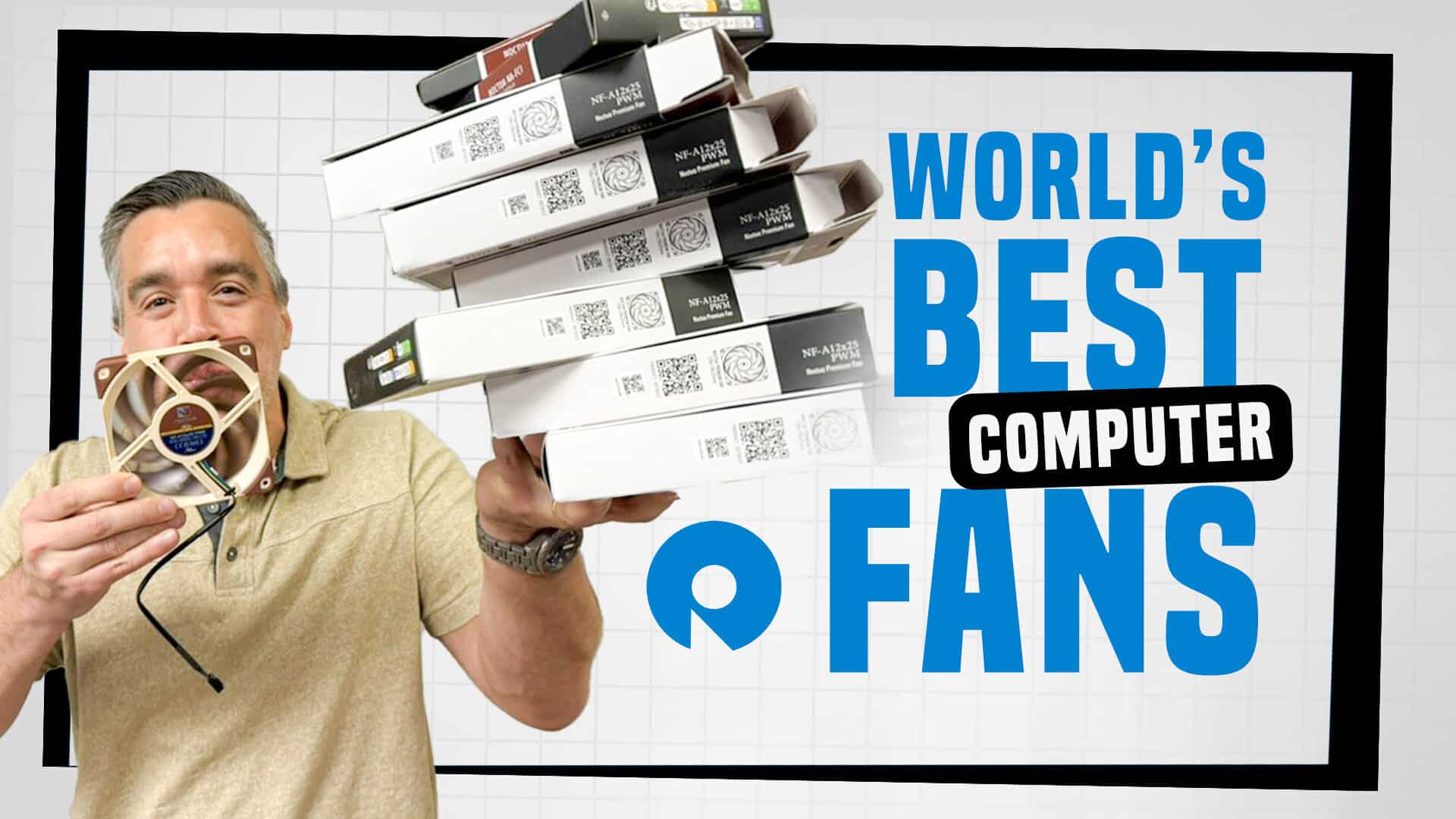
Brian goes for another live podcast this week featuring Jakob Dellinger, the “air cooling guru” at Noctua. We have featured Noctua fans in a number of our reviews, most notably our recent “Noctua Unveils NH-D15 G2, Thermosiphon, and Next-Gen Fans” and the HomeLab45 update “The HL15 Homelab Server Goes Shhhhh with New Noctua Kit.”
Brian goes for another live podcast this week featuring Jakob Dellinger, the “air cooling guru” at Noctua. We have featured Noctua fans in a number of our reviews, most notably our recent “Noctua Unveils NH-D15 G2, Thermosiphon, and Next-Gen Fans” and the HomeLab45 update “The HL15 Homelab Server Goes Shhhhh with New Noctua Kit.”
Noctua has taken fan assembly to a higher level with products for everything from laptops to data centers. They pride themselves on innovation and reducing fan noise levels across the spectrum. Based in Austria, Noctua (the Little Owl) was founded in 2005 and quickly became one of the most acclaimed suppliers of premium-quality quiet cooling products that are apparently inspired by, but do not smell like, coffee.
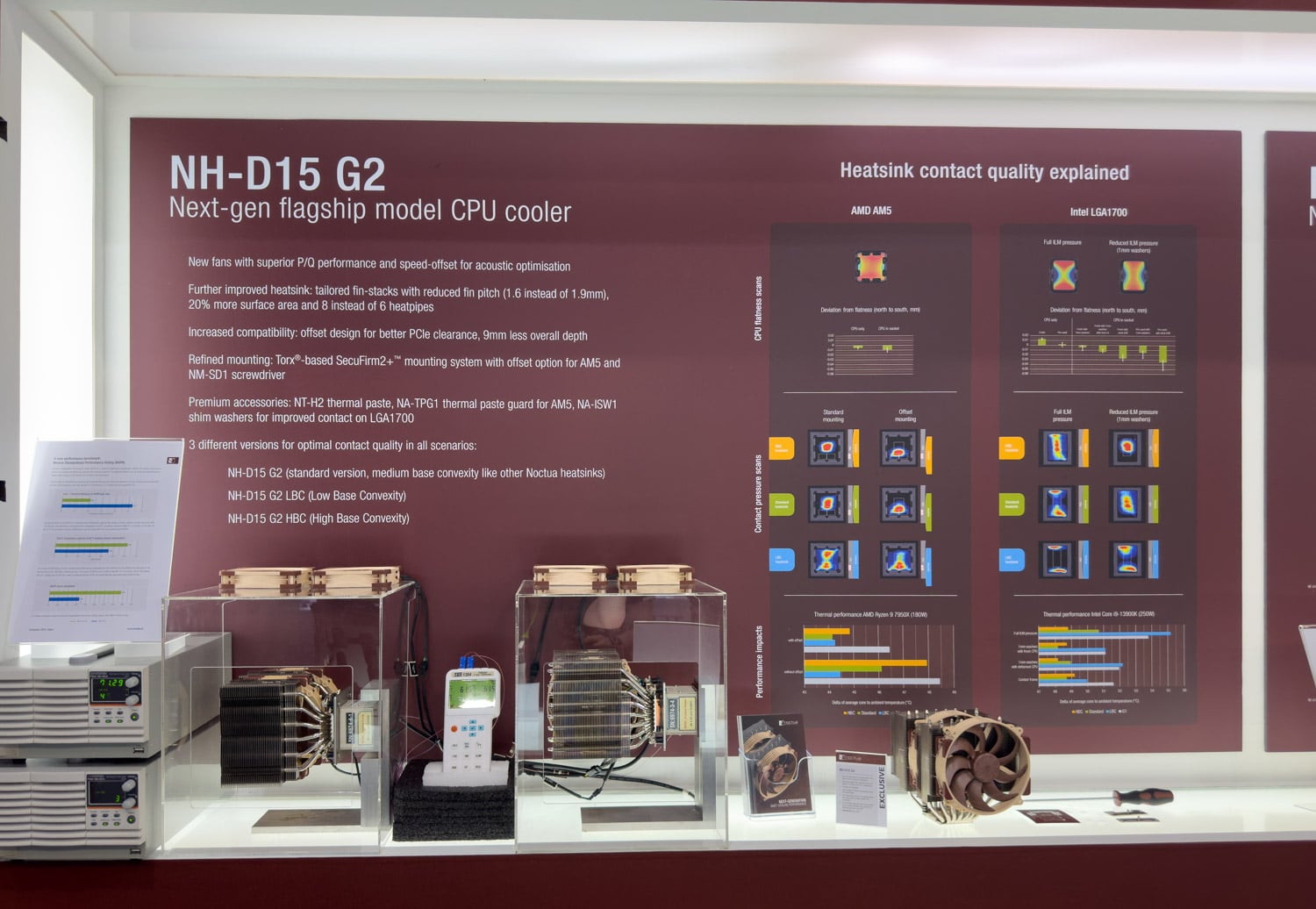
This is another live podcast where our YouTube audience joined the conversation and submitted questions to Jakub and Brian. We are pushing the boundaries on these live podcasts, inviting our audience and guests to have a genuinely interactive conversation on topics that interest them.
After dealing with several hiccups at the show’s beginning, Brian got down to business. His first question was, “Why do people love your products so much?”
00:00 Introduction
- Attention (obsession) to detail
- Quality and Performance
- Started as an OEM
- Focused on quiet, highly efficient, quality components
- Engaged with Taiwanese partner to develop cooling components
05:00 Finding the inspiration
- The CEO hated loud PCs
- Fix it before the machine is powered on
- Recap Vince’s video series for his Home Lab (Unleash the Hush: Noctua Fans and Eaton Sound Proof Rack Combine for a Peaceful Studio)
- Why are Noctua Fans beige and brow?
10:00 Scratch ‘n Sniff
- Brian shares a tidbit from his youth and asks Yakub to create a fan that emits an espresso aroma
- That is on the punch list
- Comments from the audience
- Computex
- Delivering new products
- Square frame
- Fan radiator
- Socket support
- NVIDIA prototype
- Yakub goes deep
16:00 Squeezing Enterprise boards into workstations
- Training LLMs
- Edge servers where quiet matters
- Liquid cooling
- There’s a place for air-cooled systems, too
20:00 PC and Workstation case design
- Thermal design
- Not just for workstations
- Getting creative
- Let the users do crazy stuff with the fans
- Heat sinks and heat distribution
- Applying thermal paste
- Potential to lose performance with poorly adhered heat sync
26:00 How to check for performance loss
- Yakub gets into a deep discussion about cooling options
- More than one option for every situation
31:00 Questions from the audience
- Aftermarket contact frame
- Better results from the 1mm washer mod
- More from Computex
- Noctua power supply
35:00 Showing off new products
- Even in the early development cycle
- Family-owned and run business
- No Shareholders to report to
- Delivering to the customer
40:00 Cooling GPUs
- DIY water cooling
- Voiding the warranty
- Mixed results
- Preconfigured workstations seem so loud
- Consumer-level cards are more advanced today
46:00 More on the HomeLab 15
- Fan design
- Thicker fan materials provide alternative options
- Thicker may not be better
- Fan size does matter
50:00 Wrap up
Engage with StorageReview
Newsletter | YouTube | Podcast iTunes/Spotify | Instagram | Twitter | TikTok | RSS Feed
The post Podcast #129: Keeping Your Cool With Noctua appeared first on StorageReview.com.
22 June 2024, 3:50 pm - Podcast #128 – The Best Storage for Veeam with Object First
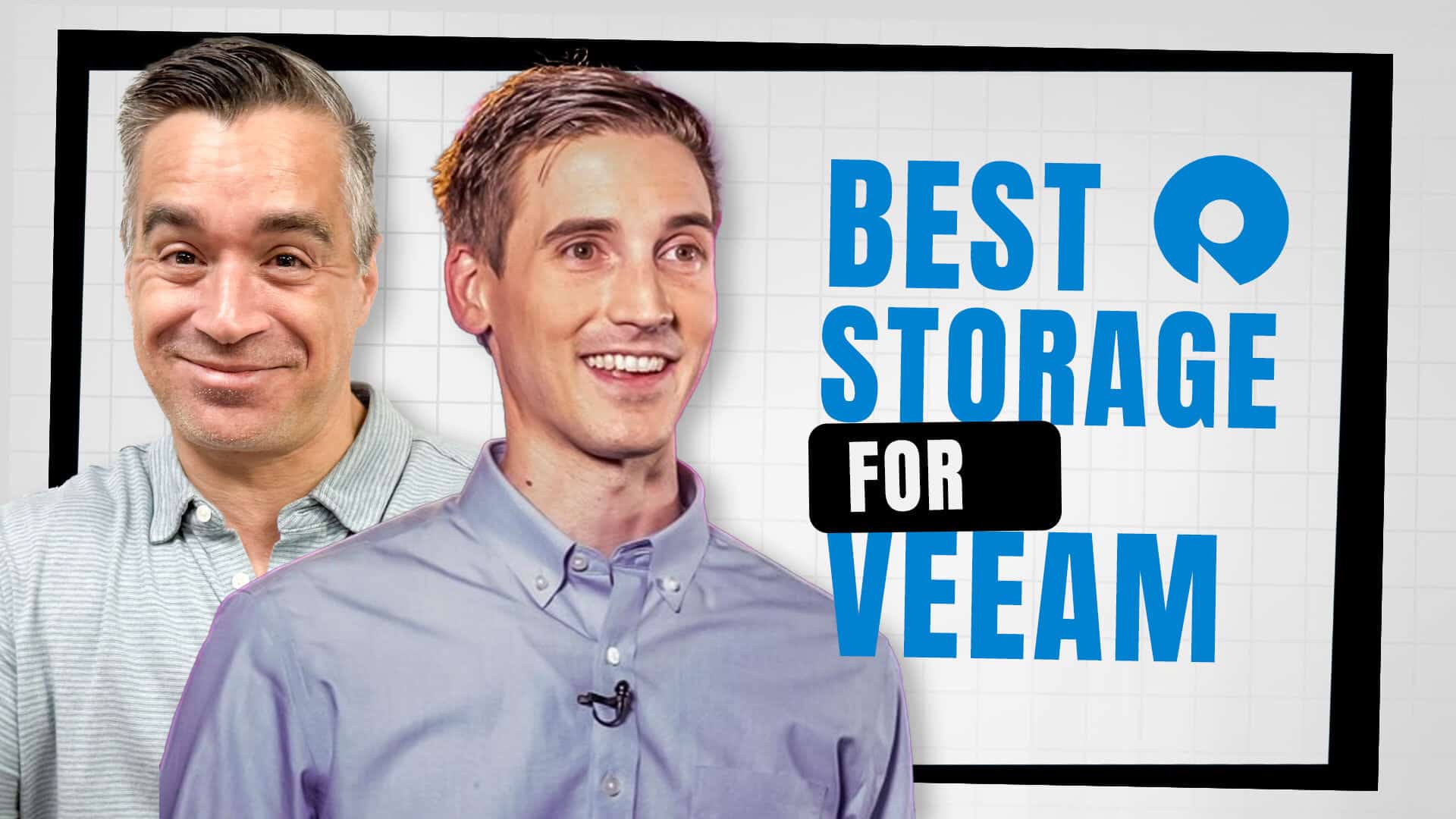
For this show, Brian sits down with Anthony Cusimano, Director of Technical Marketing, at Object First. If you are not familiar with Object First, you can check out our deep dive earlier this month, Object First Ootbi: Simple Ransomware-Proof Backups For Veeam.
Another live podcast! Thank you to all who attended.
For this show, Brian sits down with Anthony Cusimano, Director of Technical Marketing, at Object First. If you are not familiar with Object First, you can check out our deep dive earlier this month, Object First Ootbi: Simple Ransomware-Proof Backups For Veeam.
Here’s a brief intro to Object First. It was founded by the original founders of Veeam and introduced its flagship product, Ootbi (Out-of-the-Box-Immutability), in 2023. Despite the common skepticism surrounding the notion of “ransomware-proof” technology, especially in the context of backups and storage, the technical prowess and on-premise testing of Ootbi suggest they can make this promise a reality for many organizations.
Anthony has been with Object First for over two years and serves as its Chief Evangelist and Director of Technical Marketing. Prior to joining Object First, Anthony spent six years in sales and marketing with Veritas Technologies. Throughout his career, he has focused on security and preventing cyber attacks.
This is an engaging discussion covering the departure of Veeam founders to establish an appliance hardware company, that runs Veeam! Customers enjoy enhanced security by controlling both the software and hardware.
If you don’t have the time to watch end-to-end, we have highlighted segments below.
00:00 Introduction
- Object First background
- What was once old is new again
- Focus on Veeam customers
- Ootbi short intro
05:00 Getting more information
- A little detail on our deep dive
- It’s all about security
- Immutability Flag
11:00 Security Measures
- Why immutability is important
- Educating the masses
- Making life easier
- Getting some of your time back
16:00 Questions from YouTube viewers
- Implementing security
- The reasons for immutability
- Educating the users
- How to make it more secure
20:00 Beating the drum for Zero Trust
- Zero Trust Data Resilience
- Research paper download to enhance security
- Update cadence
25:00 Cooking what’s next
- Enhancements
- Easy updates
- Solid hardware
- Solid software
- Hinting what’s coming
30:00 Looking at mid-enterprise
- Options for more enterprise customers
- Reaching out for feedback
35:00 Hey! What about AI?
- Compliance and analytics
- Hold on to that data
- 30 minutes in, and this is the first AI conversation
- Things can only get bigger
- Slow backup vs slow recovery
40:00 Attacks work because they are clever
- And devastating
- It’s more than just data
- Organizations need to practice the plays just like a football team
- Practice the processes
- Attacks cause surgery delays
- Comments from Chrome Donkey and Beard of Knowledge
45:00 Talking hardware
- Appliance configuration
- How it works
- Eliminate bottlenecks
- What guides hardware decisions
- Taking customer feedback
50:00 The case for smaller customers
- There’s no value in free
- Ensure true immutability
- Internal malice
55:00 Cutting the tube
- Anthony talks about the SR liquid cooling video
- Assume breach, verify integrity
- Internal breaches
- Accidental deletions
- Beware of puppetry
60:00 Neverending Story
- Anthony’s banner
- How it relates
- Brian’s luck dragon with wings
- Wrapping up
65:00 Wrap up
Engage with StorageReview
Newsletter | YouTube | Podcast iTunes/Spotify | Instagram | Twitter | TikTok | RSS Feed
The post Podcast #128 – The Best Storage for Veeam with Object First appeared first on StorageReview.com.
1 June 2024, 3:45 pm - Podcast #127 – Backblaze Drive Report
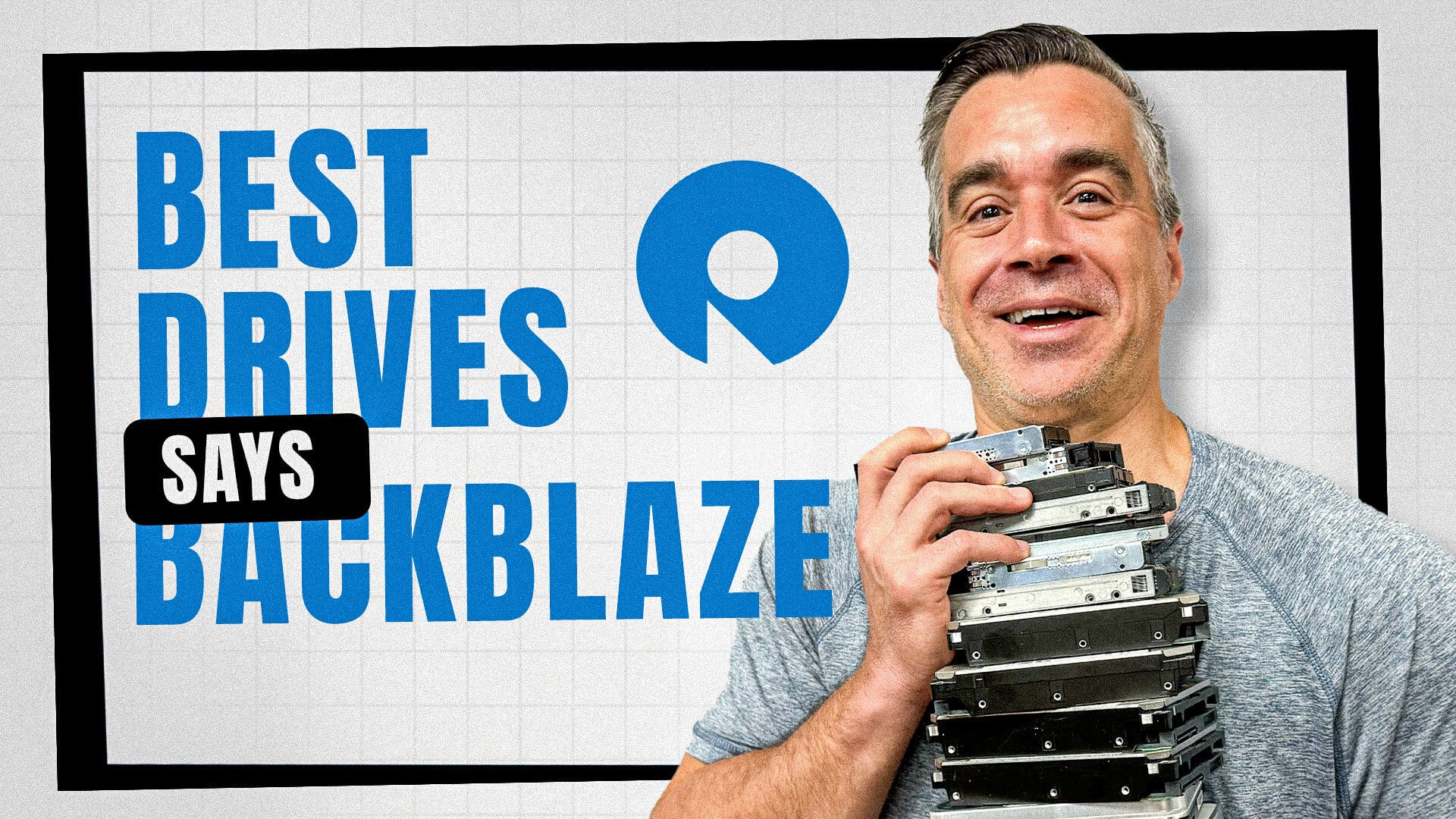
Brian welcomes Andy Klein to the Podcast this week. Andy is the Principle Storage Cloud Storyteller at Backblaze. In addition to the storyteller role, Andy currently serves as the Technical Marketing Director. Andy has been associated with storage and security technology for most of his career and has been with Backblaze for over 12 years.
Brian welcomes Andy Klein to the Podcast this week. Andy is the Principle Storage Cloud Storyteller at Backblaze. In addition to the storyteller role, Andy currently serves as the Technical Marketing Director. Andy has been associated with storage and security technology for most of his career and has been with Backblaze for over 12 years.

Brian and Andy discuss storage technology and direction and how Backblaze uses and qualifies drives for use in their data centers. This did prove to be a lively discussion around storage products, but not necessarily data center storage products. Backblaze is a service adored by home users.
Andy is one of the techs behind the Backblaze-generated quarterly storage report. The annual report details failure rates for hard drives and, in a limited sense, SSDs in use at Backblaze. Backblaze is one of the best in being open and communicative about drive usage and failures.
We decided to go live with this podcast and invited our Discord to join. Of course, since it was live, ran into a bit of an issue getting started, so there had to be a restart to get back on track.
00:00 Introduction
- Details from Q1 storage report
- Backblaze indexes over 300k hard drives
- High-level overview
- Drive-farming
- Drive insights delivered that are unavailable elsewhere
05:00 Operational details
- 16K 4TB drives
- 20K 1TB drives
- Drives stay relevant because they work
- Different drives have different failure rates
- 45 drive chassis
- drive chassis
- Densities
- Cost per TB
Reference to Podcast #124: The Path to 50TB HDDs with Frickin Lasers
10:00 Procurement Process
- Testing them all
- No smart drives
- Heavy performance penalty
- Delete and rewrite
- Encouraging users to delete files
- Smart drives don’t fit the Backblaze model
- Catching the drives destined to fail
- Weeding out the drives that won’t fit the model
- Discord question
- Aggregating drive families or even brands
- Every drive has a different personality
- Inconsistent model numbers
15:00 Making it easy to track drive changes
- The report is geared to making it easy to follow trends, changes, failure rates
- Firmware versions
- Configuration changes
- Skew changes
- Buying the least expensive drives
- Drives that arrive DOA
- Let’s go to Costco or Best Buy
- Oops! Banned from Costco
20:00 Transitioning to Enterprise drives
- Warranties
- And then voided warranties
- You never get a new drive for replacement
- Learning the drive history!
- Using Flash
- Still buying the cheapest
- Use cases
25:00 Operational considerations
- Another trip to Costco
- Burning out drives BEFORE they fail
- Write, delete, write, delete, use, delete
- Kinda like a restore server
- All data goes to hard drives
- Flash drives are for short stashing
- Operationally efficient
30:00 Form factors
- Discord question
- How do form factors influence purchases
- Densities can be managed with HDDs
- Influenced by environment
- Adding a new tier
- Dream it, price it
- Keep it simple
- HAMR
- Scheduled
- Pulled back
35:00 Experimental Tech
- Watching and Waiting
- Planned Helium drives
- Filled a small vault
- Vault=1200 drives
- Striping across 20 systems
- Legacy question from Discord
- Storage servers are contracted out
- Supermicro servers
40:00 Protocol for failure
- Cloning
- Read-only servicing
- Recovering data
- Liquid cooling
- A data center without AC
- Nautilus
- Pulling water from the river
- Some light banter about pulling water from the Ohio for the Cincy Lab!
45:00 Finding the right chassis
- Not all Chassis are equal
- Savings from water-cooled data center
- Running smart software
- Servers remember what they were doing in the event of failure
- Bringing them back online
- Resiliency
- Telemetry
50:00 Using Solid Technology
- Exposure to just about everything
- Staying in sync
- Rebuilding on the fly
- Discord question
- What’s the network fabric
- Interconnects
- Shard integrity checks
- Rebuilding drives
- Sustainability
- Giving away outdated drives
- Recycling
60:00 What’s exciting for the future?
- How will larger drives affect business
- Costs
- What’s on the bookshelf?
Wrap-Up
Engage with StorageReview
Newsletter | YouTube | Podcast iTunes/Spotify | Instagram | Twitter | TikTok | RSS Feed
The post Podcast #127 – Backblaze Drive Report appeared first on StorageReview.com.
24 May 2024, 4:02 pm - Podcast #126: A Myriad of Storage Topics with Quantum
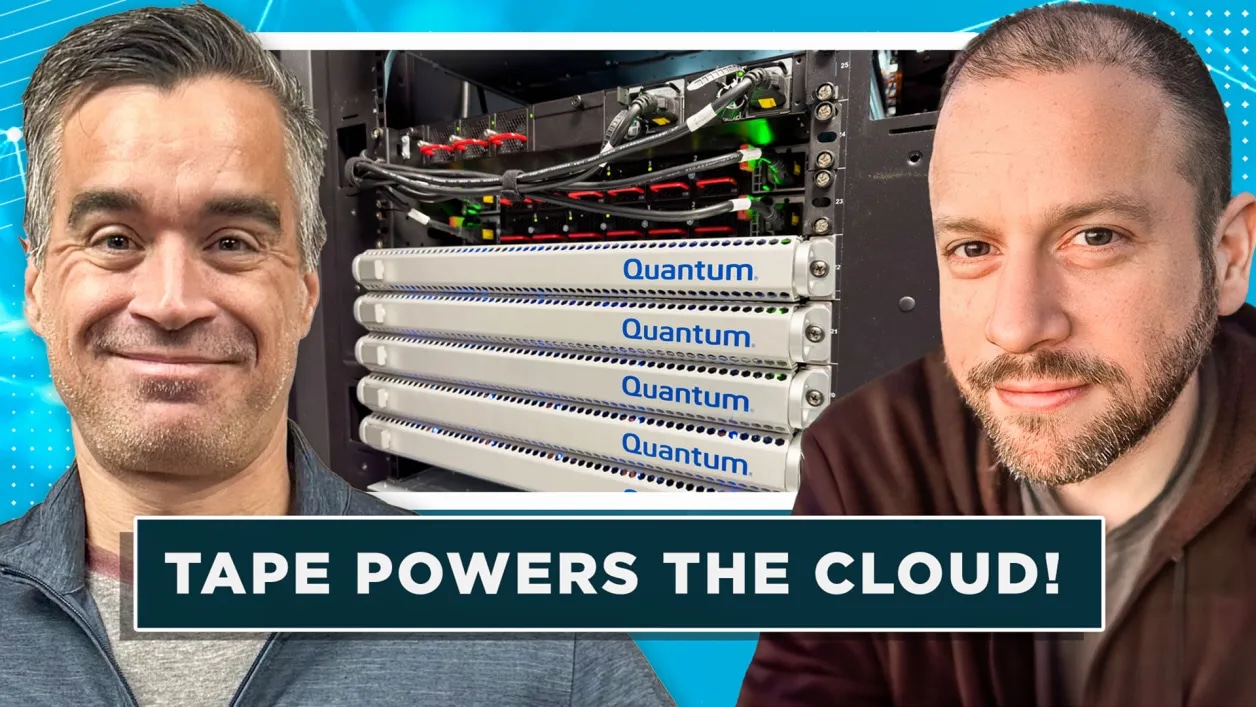
Our podcast has Brian introducing Jordan Winkelman from Quantum Corporation. If you remember, we did a deep dive review of Quantum Myriad a few weeks ago. To prepare for that review, Brian traveled to the Quantum office in Denver, where he met up with Jordan in the breakroom. The discussion expanded to include AI topics like security and surveillance, all things storage and a bit of space-related topics.
Our podcast has Brian introducing Jordan Winkelman from Quantum Corporation. If you remember, we did a deep dive review of Quantum Myriad a few weeks ago. To prepare for that review, Brian traveled to the Quantum office in Denver, where he met up with Jordan in the breakroom. The discussion expanded to include AI topics like security and surveillance, all things storage and a bit of space-related topics.
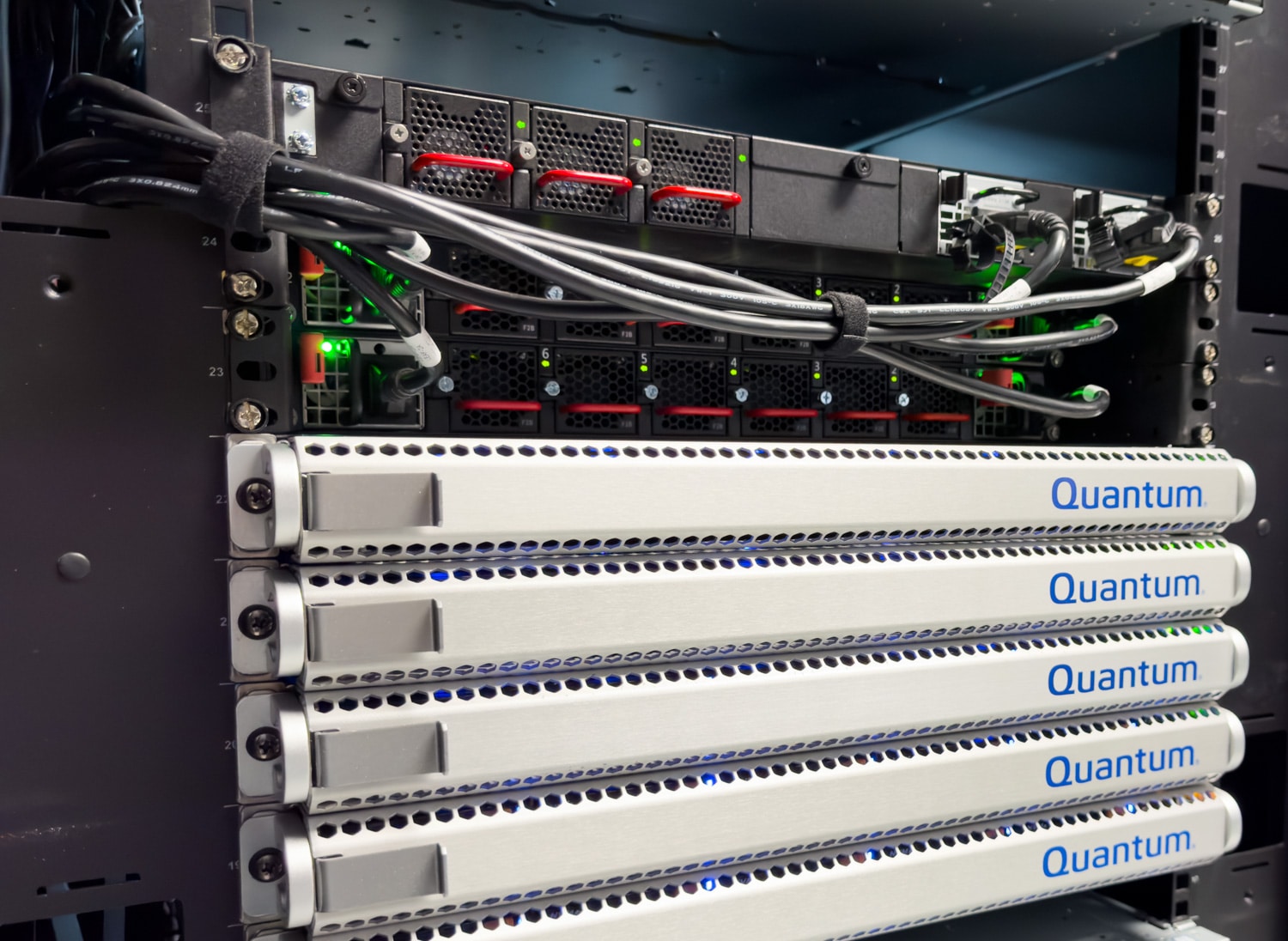
Jordan has spent over 25 years in the technology industry with technical roles supporting advertising, retail, medical, VoIP, and enterprise software and infrastructure solutions. More recently, for the past eight years, he has supported scale-out storage and field technology practices at Quantum. Jordan brings a wealth of experience in designing, testing, validating, and optimizing technology solutions for businesses of all sizes.
Quantum was very engaged in the review process and provided great support and detail. This podcast reveals the same level of attention from Jordan and provides a lively discussion on storage, security, containers, and a lot more.
Jordan and Brian go deep on technology and how the storage market has progressed over the years. There’s reminiscing about old 40MB storage drives and how difficult it is to get funding from Silicon Valley for a storage company startup. It’s a fun discussion and worth the time.
If you want to skip around the podcast, we have provided a timeline below, so feel free to jump to the topics that are more important to you.
Live on our Discord.
00:00 Introduction
- What isn’t Quantum
- 43-year-old storage company
- A bit of history around Quantum drives
- Purchased AIC Scalar Robotic Tape Library
- Myriad
- What’s coming for Myriad
05:00 Talking about Hard Drives
- A bit of history about HDDs
- LTO tape
- Tape rebound
- Tape use
- Tape densities
- Call it Cold Storage
- Erasure coding
10:00 Meeting customer SLAs
- Use cases for Object to Tape
- Education
- Medical
- Financial
- Things that need to be stored for many years
- Financial incentives to retain tape
- Where will data be consumed
- Viewing in the MSG Sphere
15:00 Is it local, or is it streaming?
- Is there a massive secure pipe for video
- Is reliable transmission infrastructure available to stream
- Media companies are set up for any streaming failure
- Multiple data centers
- multiple network routes
- It works for movies, TV shows, theaters, etc.
- How is Quantum addressing streaming vs. live content?
- Premier League football
- FI
- Superbowl
- Companies want to monetize all content
- Quantum is widely deployed throughout this industry
- Using a media asset management system
- High likelihood content is flowing through a Quantum product
20:00 Live clips
- Higher frame rate, higher resolution
- May capture data in 8K but only stream 4K
- Having the ability to upres at a later date
- May capture data in 8K but only stream 4K
- Video capture
- Cameras can ingest at different frame rates
25:00 Networking impact
- Serial Digital Interface (SDI)
- M&E still uses FC
- mostly because of low latency
- Ethernet still has latency issues
- Moving to IP-based technologies called 2110
30:00 PCI is changing with Gen 4, Gen 5, and Gen 6
- GPU Servers
- Storage Heavy
- Filling the bays tends to oversubscribe lanes
- Use Myriad’s high-performance platform
- Ability to support hundreds or thousands of concurrent connections
- Systems are designed differently today
- Some support high performance for unstructured data
- AI Workloads
- Some support high performance for unstructured data
- Requires high-performance Ethernet interconnects
35:00 AI means different things to different people
- Training and developing models
- Inferencing workloads at the edge
- It cannot be run in a silo
- Still a breakdown in structured vs unstructured data
- Integrated Deduplication and data reduction
- Find the place where data lives to generate money
40:00 Power and Cooling
- SSDs generate more heat than HDDs
- Keeping the GPUs fat
- Quantum’s take on liquid cooling
- Data center designers understand the physics of cooling
- Quantum doesn’t get that involved
- Focus on maintaining media stability
- Moving to an environmentally controlled box outside the data center
45:00 Where is the best place to store non-revenue data?
- Data may have intrinsic value
- Where to store that data
- The cloud may not be cost-effective for that data
- Why didn’t Blu-Ray succeed in the data center?
- Why is tape still the best answer
- Talk about CD and the misconceptions
- DNA based storage, ceramic, optical
- Technologies entering the storage market
50:00 DNA Storage
- Still a long way off
- Quantum has invested heavily in that space
- Consortiums contribute heavily with knowledge and technology
- Hammer Technology has been in the news for over 20 years
- Technology takes a long time to go mainstream
- New things
- Object storage on tape
- Tape is not slow
55:00 Fitting media into a footprint
- Is it tape?
- Is it drives?
- Is it tapes and drives?
- How can you make the most dense library
- cost-effective
- Physical footprint
- Redundant Array of Independent Libraries (RAIL)
- Build off-the-shelf consumer product
- Scale
- Physical deployment
- LTL consortium
60:00 Wrap up
Engage with StorageReview
Newsletter | YouTube | Podcast iTunes/Spotify | Instagram | Twitter | TikTok | RSS Feed
The post Podcast #126: A Myriad of Storage Topics with Quantum appeared first on StorageReview.com.
12 January 2024, 4:22 pm - Podcast #125: 45Drives and the Creation of the HL15 Homelab Storage Server
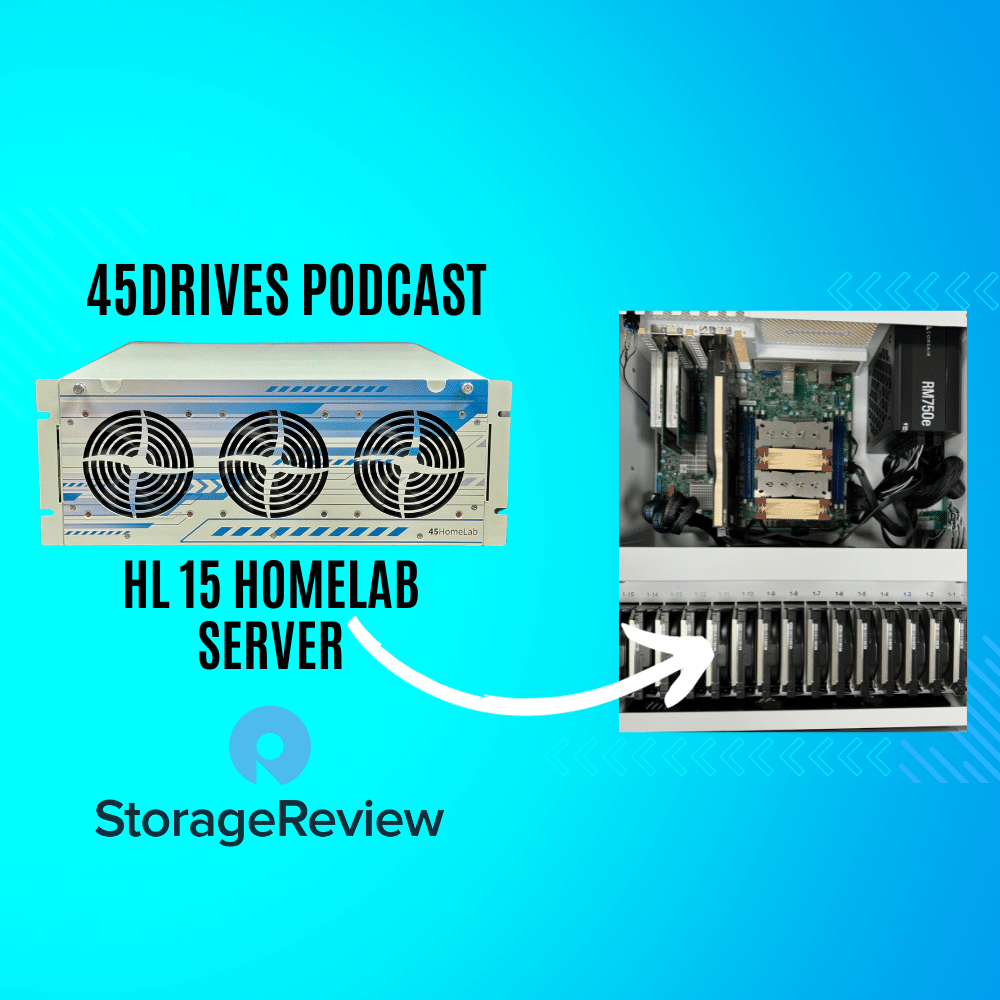
45Drives has been a cloud-scale staple for some time, delivering some of the first purpose-built storage servers for service providers. Over time the company has added many more servers, most recently an exciting 15-bay rig designed specifically for the homelab enthusiast.
45Drives has been a cloud-scale staple for some time, delivering some of the first purpose-built storage servers for service providers. Over time the company has added many more servers, most recently an exciting 15-bay rig designed specifically for the homelab enthusiast.
Doug Milburn joins the podcast to discuss the origins of 45Drives and the considerations that went into the HL15. Doug also discusses some of the roadmap for the homelab line, which should get enthusiasts bubbling in the event the HL15 isn’t your cup of tea.
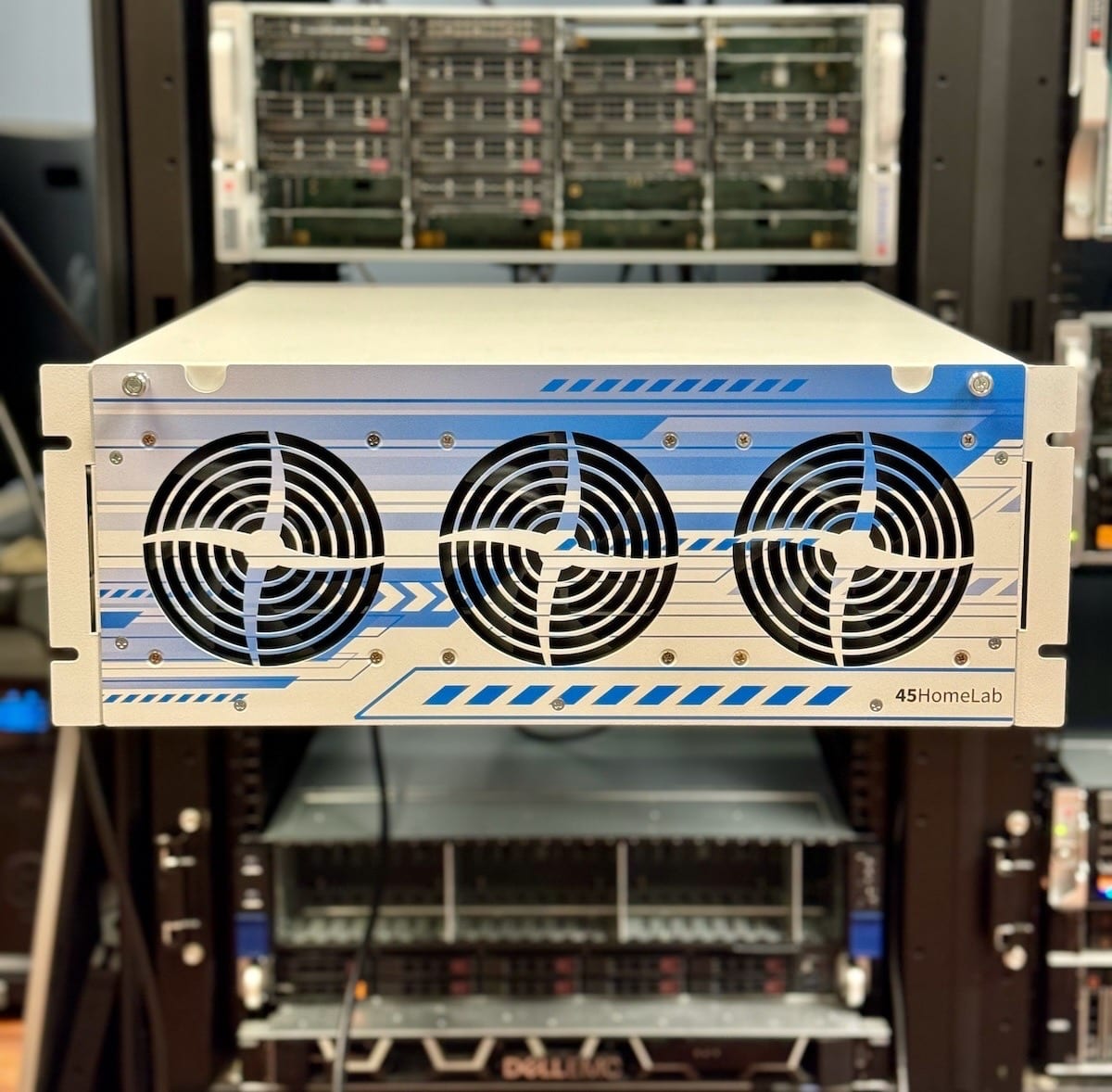
Doug describes himself as a “geek by birth.” He likes everything electronic, computer, mechanical, whatever, studying physics for a couple of degrees, a Ph.D. in mechanical engineering, and picking up everything else along the way.
We are just starting our test and review of the HL15, to get up to speed on our progress check out our unboxing and setup video here.
The podcast was done live on Discord – join Discord to keep up to date with all the latest from the SR Lab!
We are transcribing the podcast here, so you can skip to sections that might be more interesting to our listeners. However, if you have time, catch the podcast in its entirety. You won’t be disappointed. The YT video in embedded below for those who prefer the visuals.
00:00 Introduction
- Personal background
- Life in Nova Scotia
- Education background
- Building metal things
- Challenges doing research
- Building enclosures
05:00 Integrating everything
- Materials, research, building, manufacturing equipment, etc
- Created 3D CAD software – Protocase Designer
- Backblaze cold storage
- Met with Netflix to build computers
- Drives operating in parallel
- incredible data transfer rates
- Multiplexing slows things down
- Tripping over drivers
10:00 Get up to speed on the HL15
- Check out our YouTube Video
- Brian talks about building the server
- Jordan and Kevin get top billing
- Kevin and Jordan try to explain the reasoning
- Brian closes his eyes and pretends not to listen
- Storage demands were not as significant as today
- Data sets were smaller 15 years ago
- AI is driving these massive data sets
- What’s different for 45Drives today
- Focus
- Customers drive 45Drives business direction
15:00 Working with government agencies
- Federal government creates lots of data
- everything from law enforcement to scientific agencies to military
- University research
- Univ of California San Diego
- Wildfire project
- Utilizing video cameras for fire observation
- Using AI creating massive data sets
- Lots of videos to process
- Univ of California San Diego
- Municipalities
- Video Everywhere
- Forensic data
- Body cams
- Car dash cams
- Creating the Server Zoo
- Data is here, there, everywhere
- Adopting clusters
- What’s interesting to 45Drives
20:00 Cold storage
- Enterprises like the reliability that comes from 45Drives
- Moving to flash
- Flash 32 drive unit
- SATA and SAS
- First tri-mode unit
- Building a machine
- Hot-swap drives
- 16 million IOPs
- 32 Gb/s
- Lab guys love the HL15
- Impressive build
25:00 Delivering a clean build to customers
- Machines cut the die, but people inspect and clean up
- Why 45Drives build safe and solid chassis
- Sharing anecdotes
30:00 Building affordable home lab equipment
- Affordability range
- Get it down to $2K
- Business is brisk
- Sold in excess of 250 units
- Discord question: Why build a white server instead of the traditional black?
- Came from feedback from many resources
- Discord question: does adding color and graphics add to the cost?
35:00 Built in North America
- 45Drives is a believer in fair wages
- Employees are in with variable pay
- Build with quality
- Let customers add to it easily
- Cost-effective customization
- Add whatever drives you want
- Use the software you need
40:00 People have their own idea of what they want
- 45Drives fills 45 percent full builds
- 55 percent are built with other options
45:00 You can’t please all the people all the time
- People should buy what they can afford
- Just getting started, buy from eBay
- Get a used server like a PowerEdge
- build it so you can use it
- the HL15 is a premium server
- Is there a thin client on the way?
50:00 Looking at the hardware build design
- Keeping the price point
- Top loading caddy
- relieving repetitive stress injury
- Do you really need 240 screws?
- Reducing vibration on hard drives
- Flash vs HDD
- The right tool for the job
- Cost per terabyte
55:00 Question from Discord audience
- How do 45Drives characterize support and warrant for the HL15
- Low defect rate
- Ship it back, or they send the part via FedEx on 45Drive’s nickel
60:00. Things you should and shouldn’t try
- Don’t try what we did in the lab
- Want another podcast with 45Drives?
63:00 Wrapup
Subscribe to our podcast:
Engage with StorageReview
Newsletter | YouTube | Podcast iTunes/Spotify | Instagram | Twitter | TikTok | RSS Feed
The post Podcast #125: 45Drives and the Creation of the HL15 Homelab Storage Server appeared first on StorageReview.com.
4 December 2023, 10:35 pm - Podcast #124: The Path to 50TB HDDs with Frickin Lasers
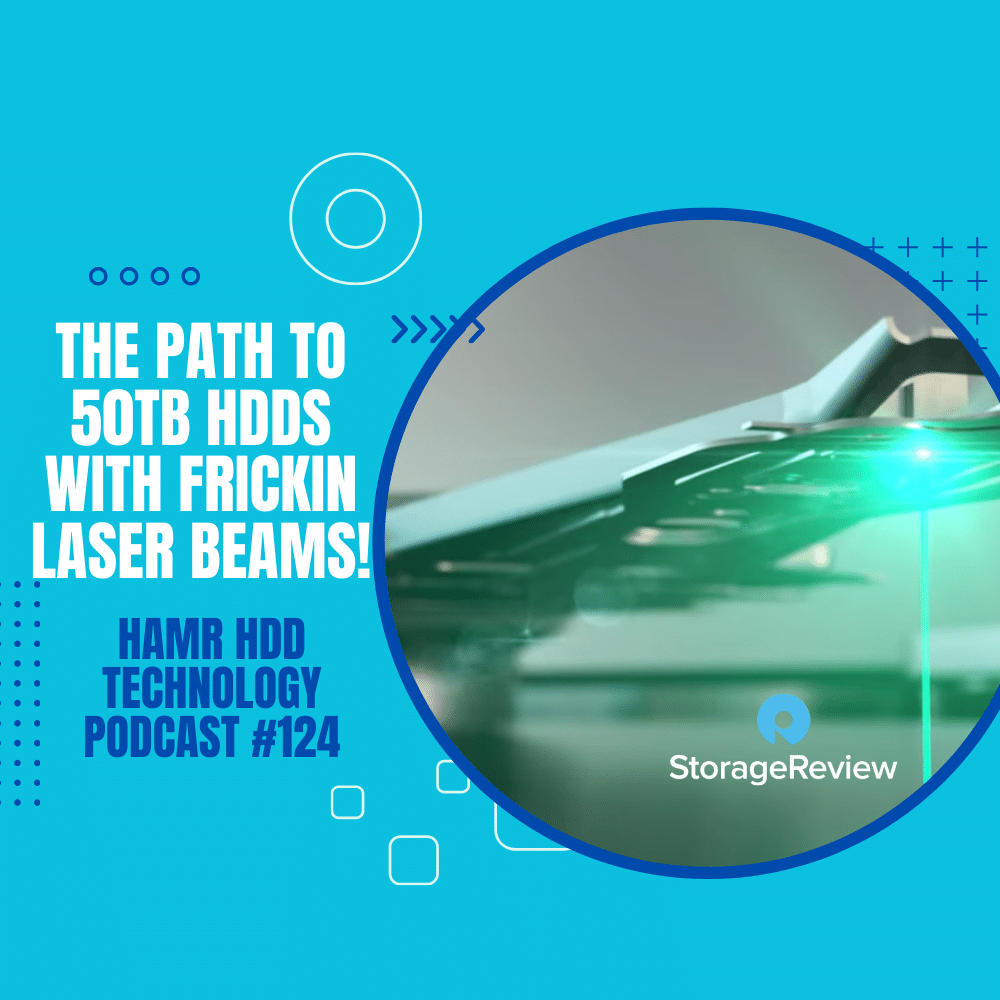
Brian invited Seagate’s Colin Presly to the podcast this week to discuss research and developments in hard drives. Colin has been with Seagate for 20 years and is currently the Senior Director in the Office of the CTO. Originally from the UK, Colin moved to Minnesota over 20 years ago. The headline? HAMR is sampling with customers and 50TB HDDs are possible.
Brian invited Seagate’s Colin Presly to the podcast this week to discuss research and developments in hard drives. Colin has been with Seagate for 20 years and is currently the Senior Director in the Office of the CTO. Originally from the UK, Colin moved to Minnesota over 20 years ago. The headline? HAMR is sampling with customers and 50TB HDDs are possible.

Having grown up in the UK, Colin is a big sports enthusiast supporting teams like Liverpool Football Club (good pick), Formula 1, Rugby, and cricket. He is still a fan and continues to follow his teams from Shakopee, MN.
From a technology perspective, Colin considers himself to be an experienced engineering leader and technologist with over 20 years of broad technical and managerial experience in the disc drive industry. He has a proven track record managing diverse cross-functional teams, developing precision capital equipment, and productizing enterprise-quality disc drives.
After a few minutes of talking sports, Brian and Colin got serious about the real topic of this podcast: hard drives. The great thing about Colin is his enthusiasm for sport and technology.
This is a great discussion between two people who have been in the storage industry for a long time and still have the passion to get excited about what’s around the corner. Hear what is around the corner in hard drive development.
Streamed live with StorageReview Discord members.
Full video on YouTube
You should give this podcast a view in its entirety, but if you are stretched for time, the timestamp is below.
00:00 – Introduction
- Let’s talk sports
- Football (real football).
- Formula 1
- Rugby
- Cricket
05:00 – Let’s talk spinning disks
- Hard drive technology
- Open them up and see what actually goes into the hard drive
- Cloud is a hard drive
- Progressive increments in capacity
- What goes into the technology
- Hard drive inflection point for growth
- What are the limitations
10:00 – Hard drive direction
- Platters, heads, size, area
- Structure
- Preventing flipping bits
- Scale with larger platters
- Is 3.5 inches the right size going forward
- Hard to justify changing the HDD’s physical size
- Changing the size of the HDD is not the best approach
15:00 – Comparing Flash
- New ways to consume storage
- Hyperscalers
- Challenging in all sectors
- OCP
- We need the standards
- NVMe for hard drives?
- Watch this space – an exploration activity
20:00 – The appeal of one interface
- Convincing the market
- Hyperscalers have a major influence
- SMR
- Writing wider tracks
- Challenges on Read
- PMR and CMR
- Restrictions
- Want to get to the next BIG step
- ISOMER
- HAMR- Heat-Assisted Magnetic Recording
25:00 – Intent to launch larger hard drive
- Game changer
- Increased drive capacity
- Shifts in data center technology take time
- A customer has nothing to change
- Plasmonic effect
- Heat in the media allows for changing media type
30:00 – Executing heating of an area
- Heat is localized – nanometers
- Heat makes the bit flip
- Seagate has put years of effort into the project
- Miniaturization journey
35:00 – Challenges in thermal and magnetic stability
- Directing heat to the interface
- Surviving that amount of heat
- Experiments to get where they are today
- HAMR is the next leap in technology
- Is HAMR a play for small drives
- Power consumption
40:00 – Replacing older 4TB drives with 20TB drives – energy savings
- Big demand for that 2TB increment can save operation costs
- Positive environmental impact
- The demand will drive development
45:00 – GenAI driving storage capacity
- Density is critical
- Legal reasons to increase density
- Political trends
- Video
- Keeping the data long-term
50:00 – Referencing CORVAULT 106 Drive System
- Multi-actuator
- Colin ran the program
- Splits in two inside the drive
- Creates a parallel operation
- Performance per TB
55:00 – Wrap-up
Subscribe to our podcast:
Engage with StorageReview
Newsletter | YouTube | Podcast iTunes/Spotify | Instagram | Twitter | TikTok | RSS Feed
The post Podcast #124: The Path to 50TB HDDs with Frickin Lasers appeared first on StorageReview.com.
18 October 2023, 3:12 pm - Let’s talk sports
- More Episodes? Get the App
Your feedback is valuable to us. Should you encounter any bugs, glitches, lack of functionality or other problems, please email us on [email protected] or join Moon.FM Telegram Group where you can talk directly to the dev team who are happy to answer any queries.
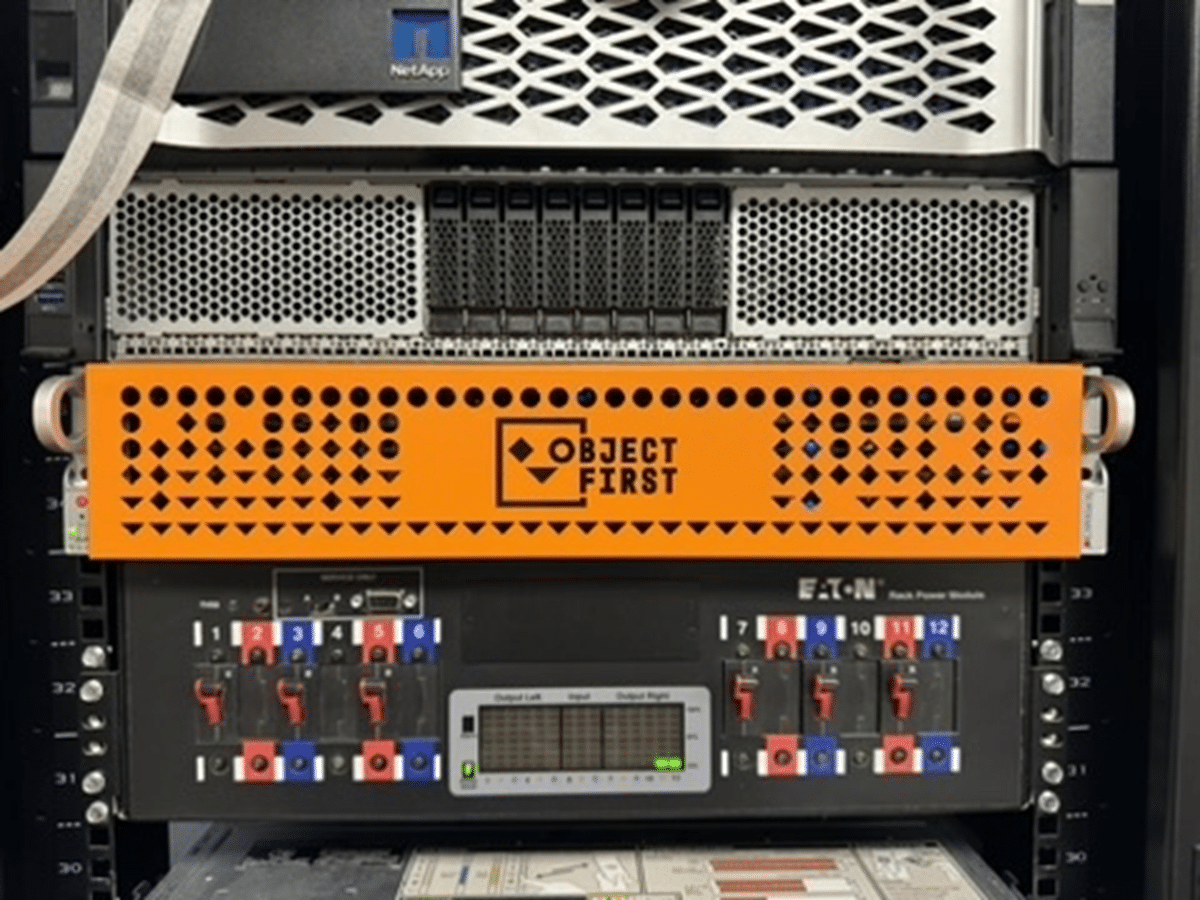
 Up First from NPR
Up First from NPR
 Heavy Networking
Heavy Networking
 Security Now (Audio)
Security Now (Audio)